Table of Content
New Orleans | Intro
Located in Louisiana, New Orleans sits on the Mississippi River and is a port city that was once a French and Spanish colony. It boasts the historic French Quarter and many buildings dating back to the colonial era, making it a city where French, Spanish, African, and American cultures merge. It is also the birthplace of jazz and is famous for its delectable Cajun and Creole cuisine, a hallmark of the American South. Visiting New Orleans is an experience, an adventure deep into the soul of the American South.
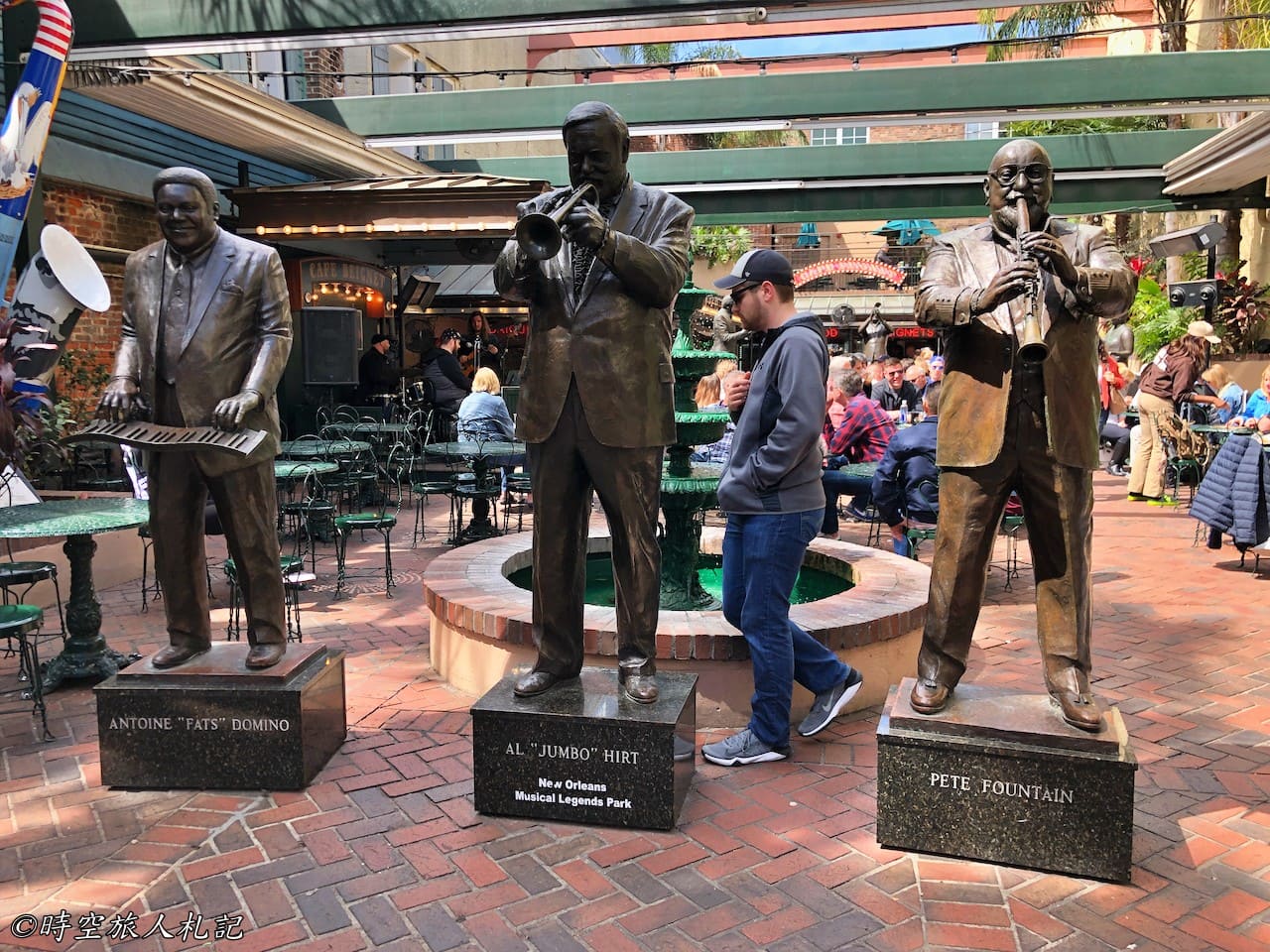
New Orleans | 3 Day Itinerary
For a three-day trip to New Orleans, the itinerary for the first two days primarily focuses on the city center's French Quarter and the Garden District. The third day can be planned for excursions to the surrounding areas, such as the plantation and swamp tours. We arrived on a night flight and left on an early morning flight on the fourth day, providing a full three-day itinerary for your reference:
| Day | Itinerary |
| 1 | Arrive in New Orleans early in the morning, first to theCafe BeignetBreakfast, day trip to the French Quarter and the museums, evening trip to Preservation halls for jazz. |
| 2 | Arrived in New Orleans early in the morning, first went to Cafe Beignet for breakfast, spent the daytime in the French Quarter and museums, and in the evening, went to Preservation Hall to listen to jazz music. |
| 3 | Participating in a day tour of the swamp and plantation tour, followed by another visit to Preservation Halls to listen to jazz in the evening. |
If you're interested in guided tours, it's recommended to consider purchasing the City Pass, which includes quite a few different guided tour options.
New Orleans City Pass
New Orleans | Accommodations and Transportation
To fit the New Orleans itinerary within a tight three days, the most important thing is to choose accommodations near the attractions, and the most convenient option is, of course, the bustling French Quarter. This time, our stay was at Aloft New Orleans Downtown, which is just two streets away from the lively center of the French Quarter, making the location extremely convenient yet not too noisy.
Looking for a price comparison for accommodation in New Orleans?
In terms of transportation, New Orleans city attractions are very conveniently located, so you don't need to consider renting a car at all. If you live nearby, you can just walk around the attractions. If you live nearby, you can walk around the surrounding attractions. You can take a streetcar from French Quarter to Mardi Gras, which is the cheapest and easiest way to get around. There is a free shuttle bus from the French Quarter to Mardi Gras World. the official websiteYou can check the nearest station on the website, but the actual route is not fixed, so you need to call the phone number on the website to notify the number of people waiting for the bus in order to make sure that the bus will come and that there are still enough seats available. If you want to take advantage of the free shuttle bus, you will need to reserve a little more time.
For the suburban areas, visiting plantations and the like is most conveniently done by participating in local tour group itineraries, which include hotel pickups and drop-offs. If the group isn't too large, the cost is actually comparable to renting a car and buying tickets on your own.
Plantation Day Trip
New Orleans | Attractions
French quarter
The French Quarter can arguably be considered the essence of New Orleans tourism, filled with the exotic charm of French colonialism and the main concentration of New Orleans' attractions. The attractions here are all within walking distance. For our three-day and two-night itinerary, we also chose to stay close to the French Quarter at Aloft New Orleans Downtown. The French Quarter boasts unique European-style architecture, countless art galleries, antique shops, and distinctive restaurants.
Must See | Jackson Square
Our flight arrived early in the morning, and after checking into the hotel, it was still only 7:30 AM when we headed out. After breakfast, our first stop was Jackson Square. This is the most famous square in New Orleans, designed to mimic Paris's Place des Vosges. Many of the surrounding buildings are quite famous, such as the St. Louis Cathedral, the Cabildo, and the former Statehouse. The street in front of the square is bustling with stalls and tourists, lively from early in the morning.
The landmark St. Louis Cathedral in New Orleans, originally built in 1718, has undergone multiple reconstructions. Although it no longer resembles its original structure, it still retains its Renaissance style. The streets behind St. Louis Cathedral, including Bourbon Street, Royal Street, and Chartres Street, are the most bustling areas, where nearly all museums and attractions are located.

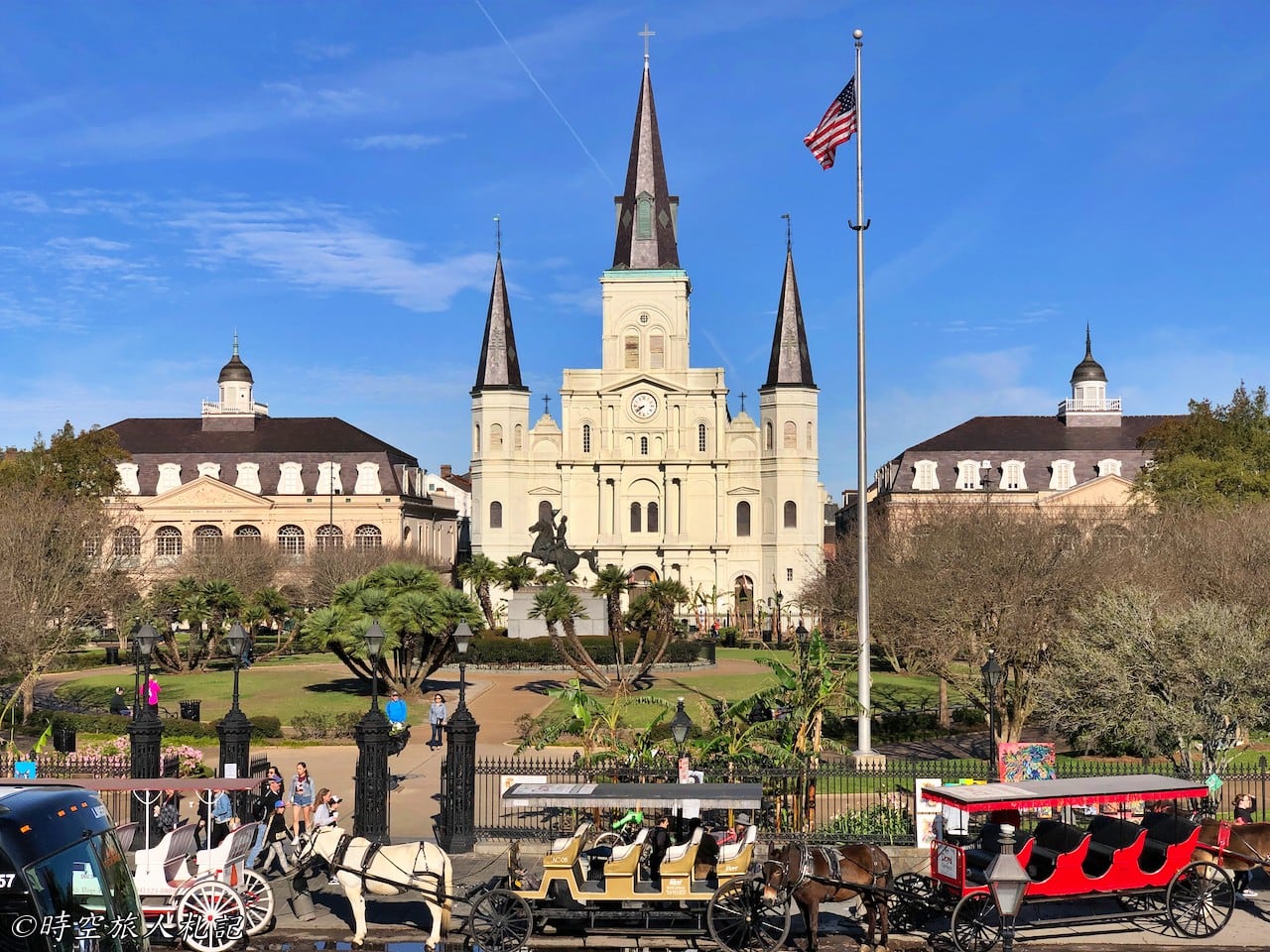
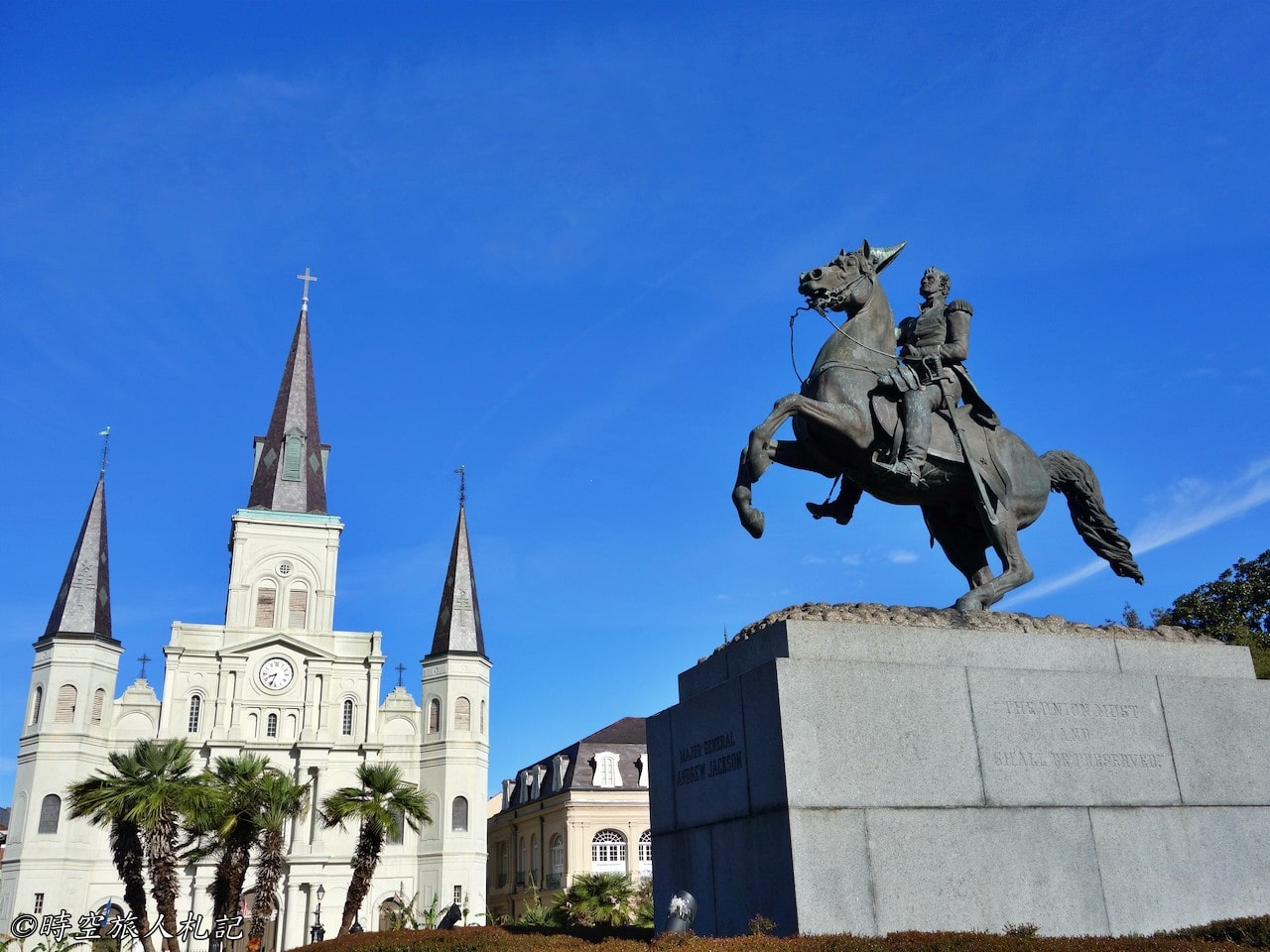

Climbing the stairs across from the square, we found ourselves on the banks of the Mississippi River. Perhaps because it was still early, the riverside park was free from the clamor of tourists. Walking along the Mississippi River, we could see many famous landmarks and landscapes, such as the French Market and the Audubon Aquarium.
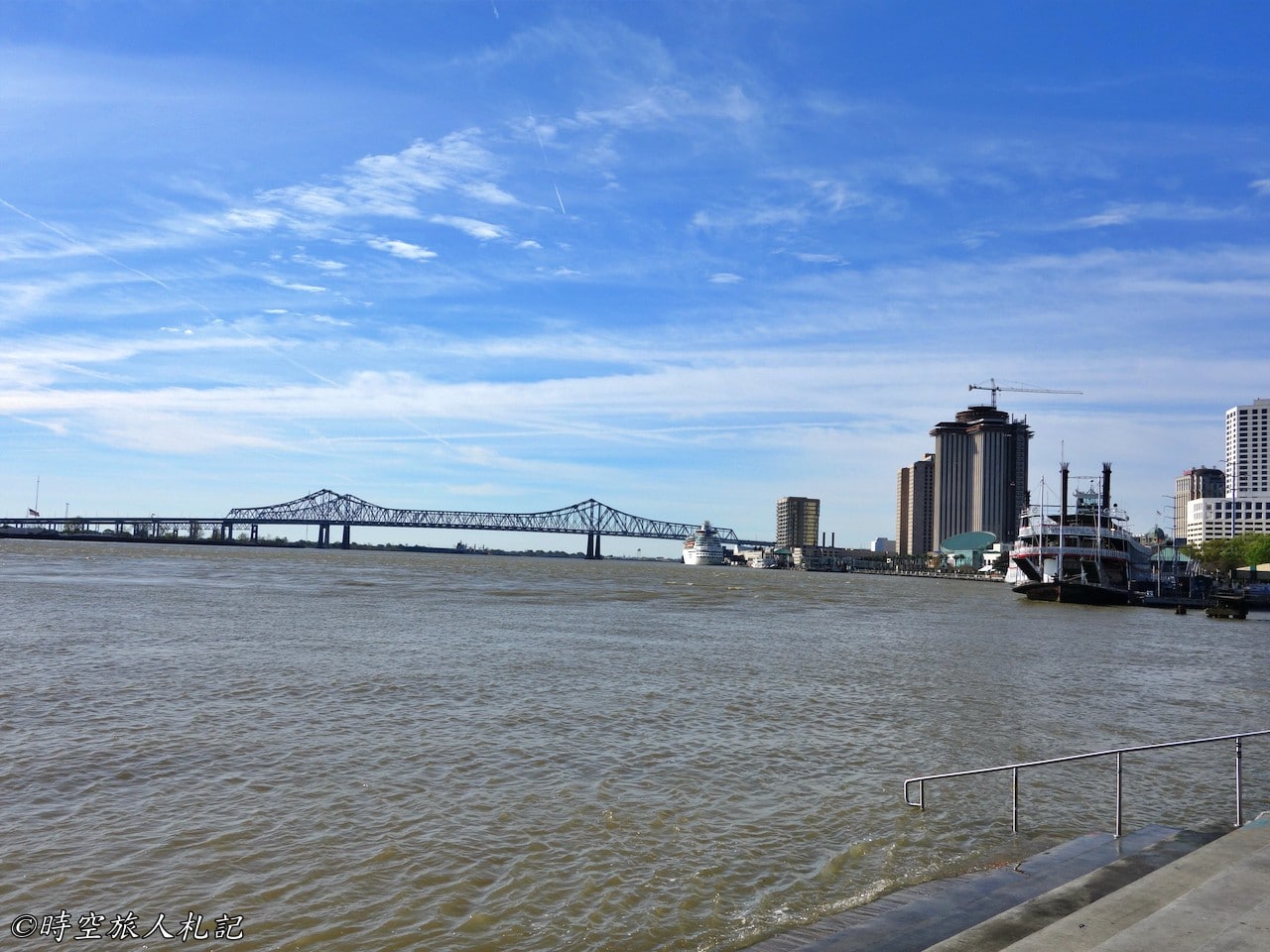

Must See | Bourbon Street
The buildings that currently stand on Bourbon Street were all constructed during the Spanish period, with brick houses and iron railings being characteristic features of the architecture here. Flowers and plants often peek out from the balconies on the second floor. This street has a long history, dating back to the early 18th century. The street is mostly quiet in the morning, but by the afternoon, lively street music performances begin to fill the air.
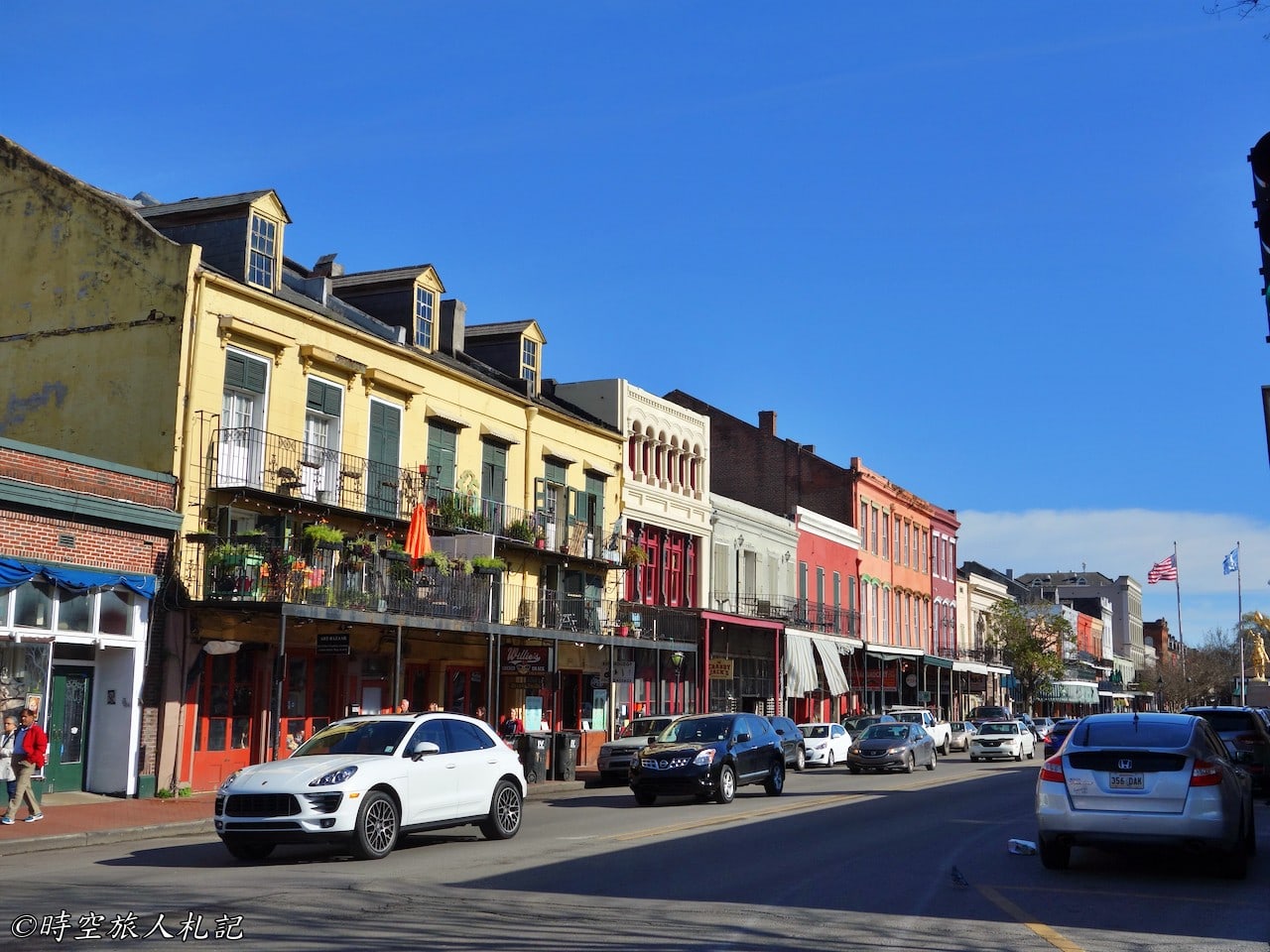
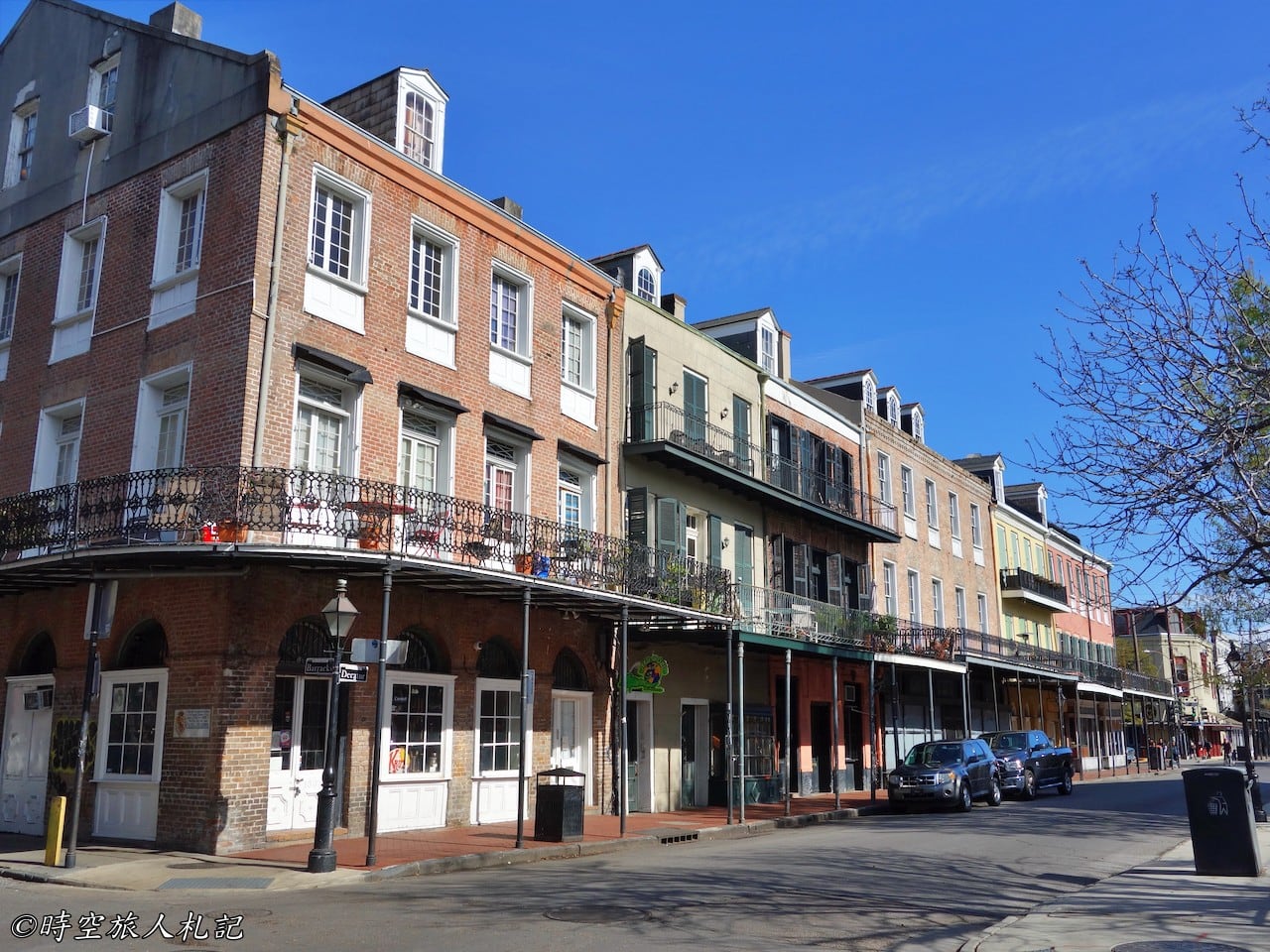
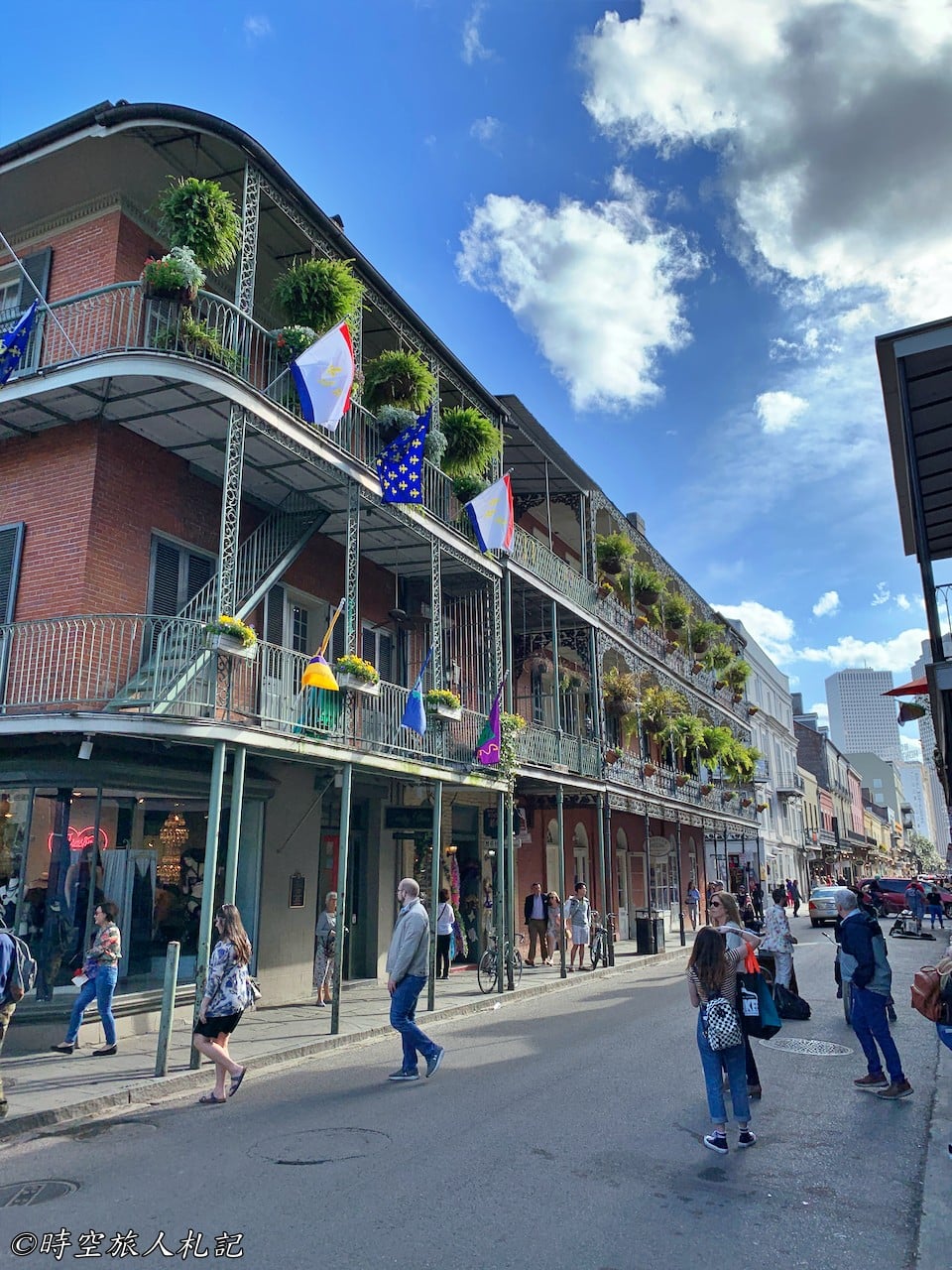
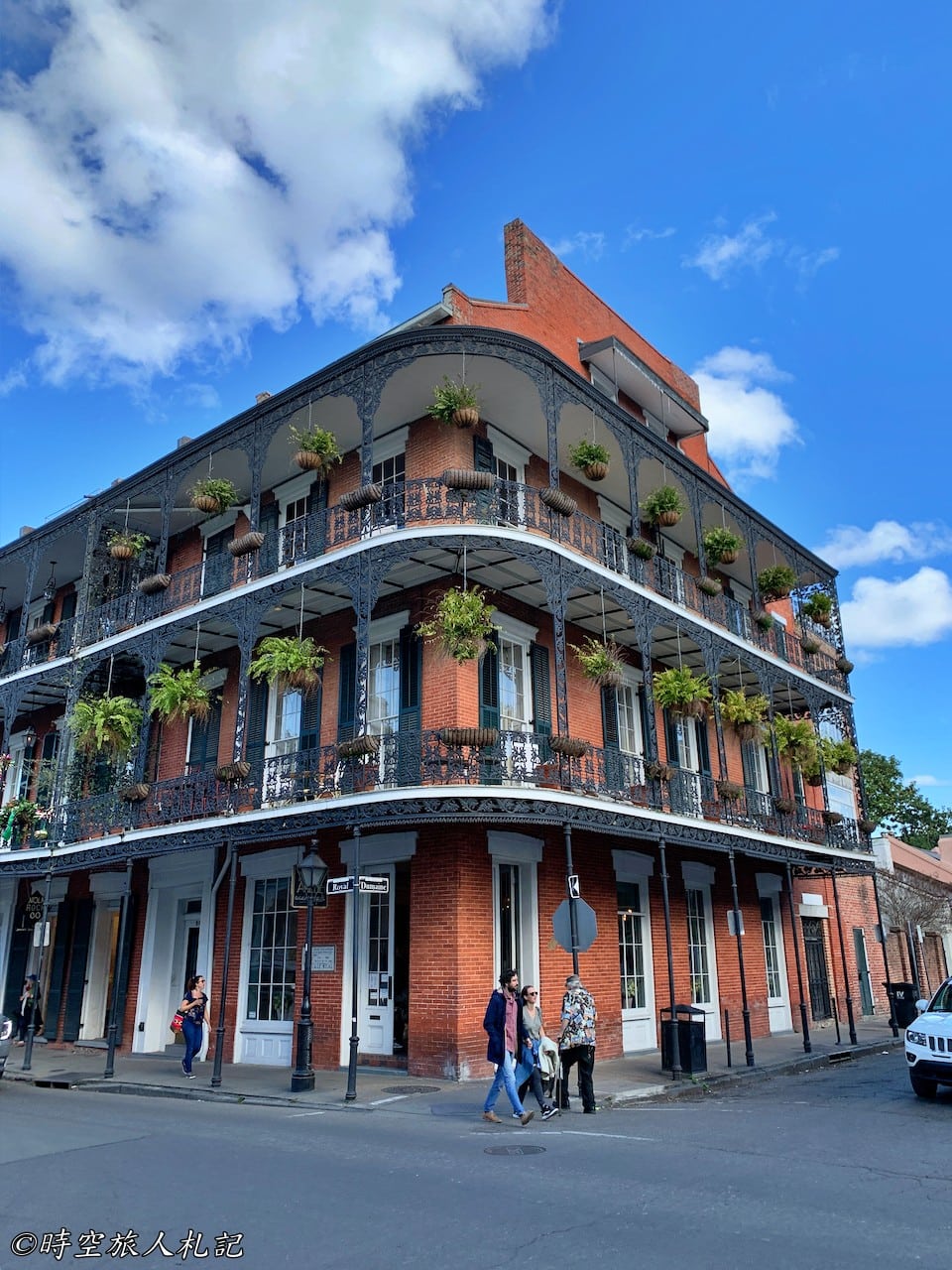
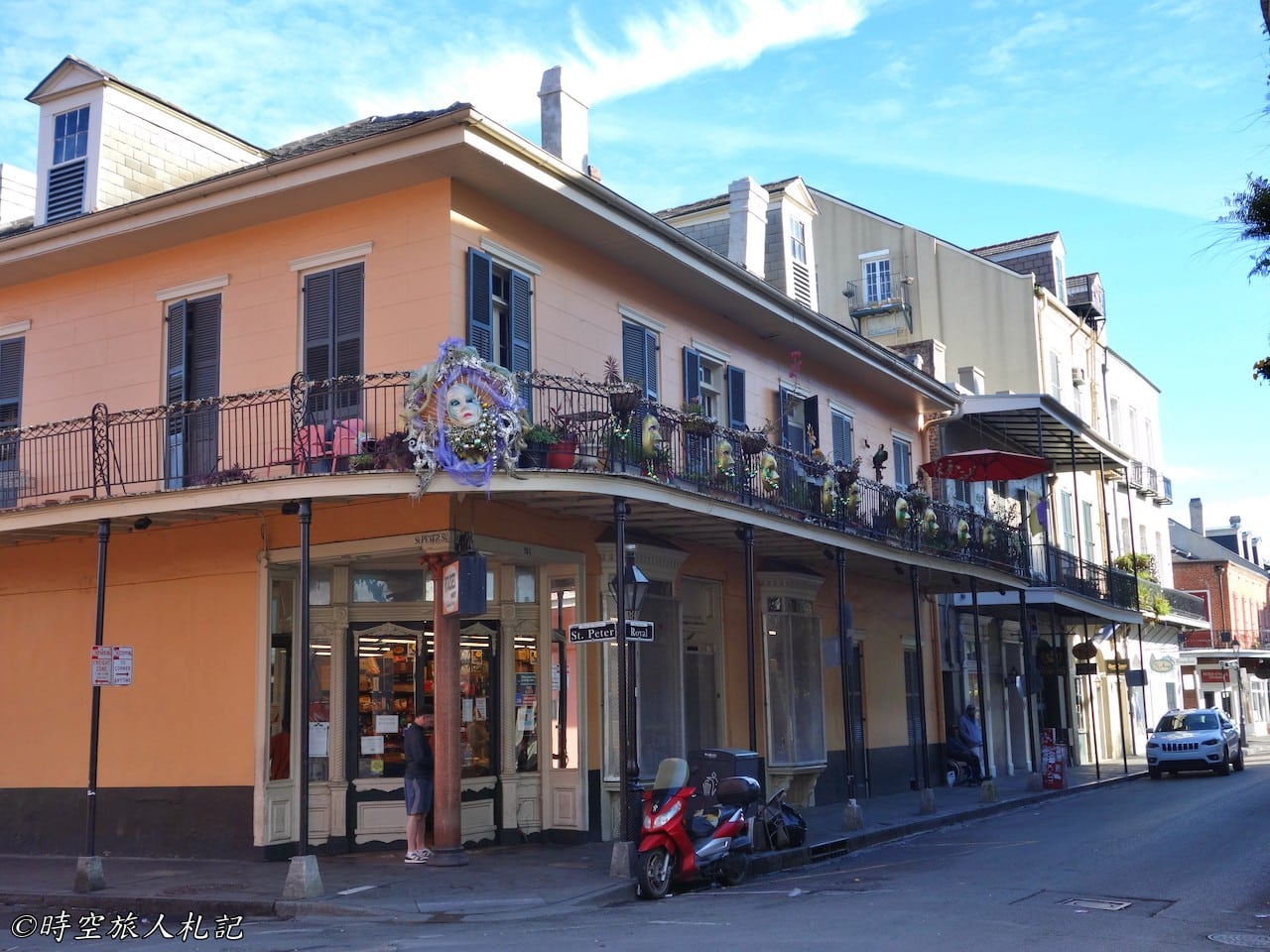
Around the afternoon, restaurants and bars gradually come to life, and the sound of street jazz becomes vibrant and lively. As dusk falls, the revelry begins.
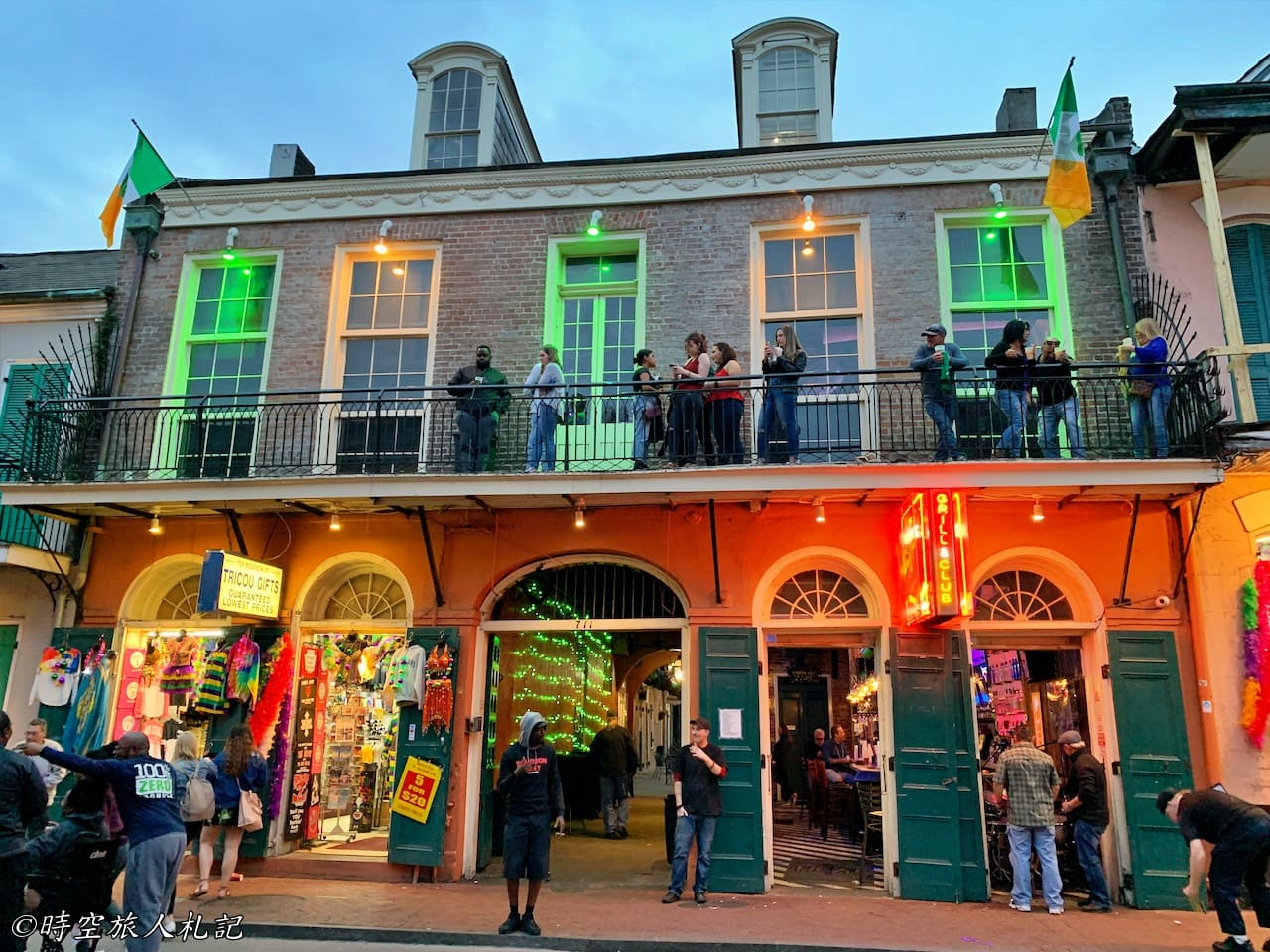
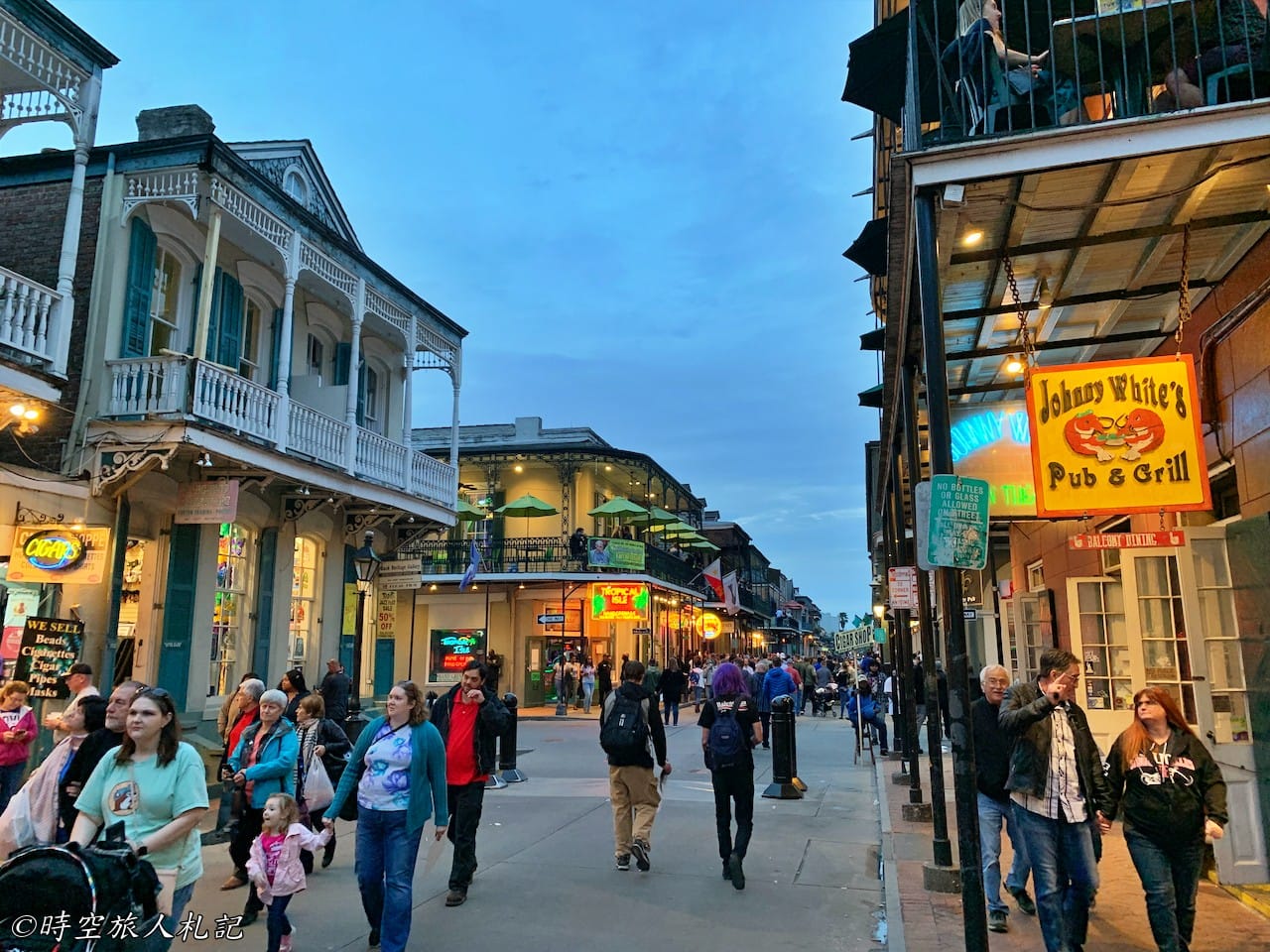
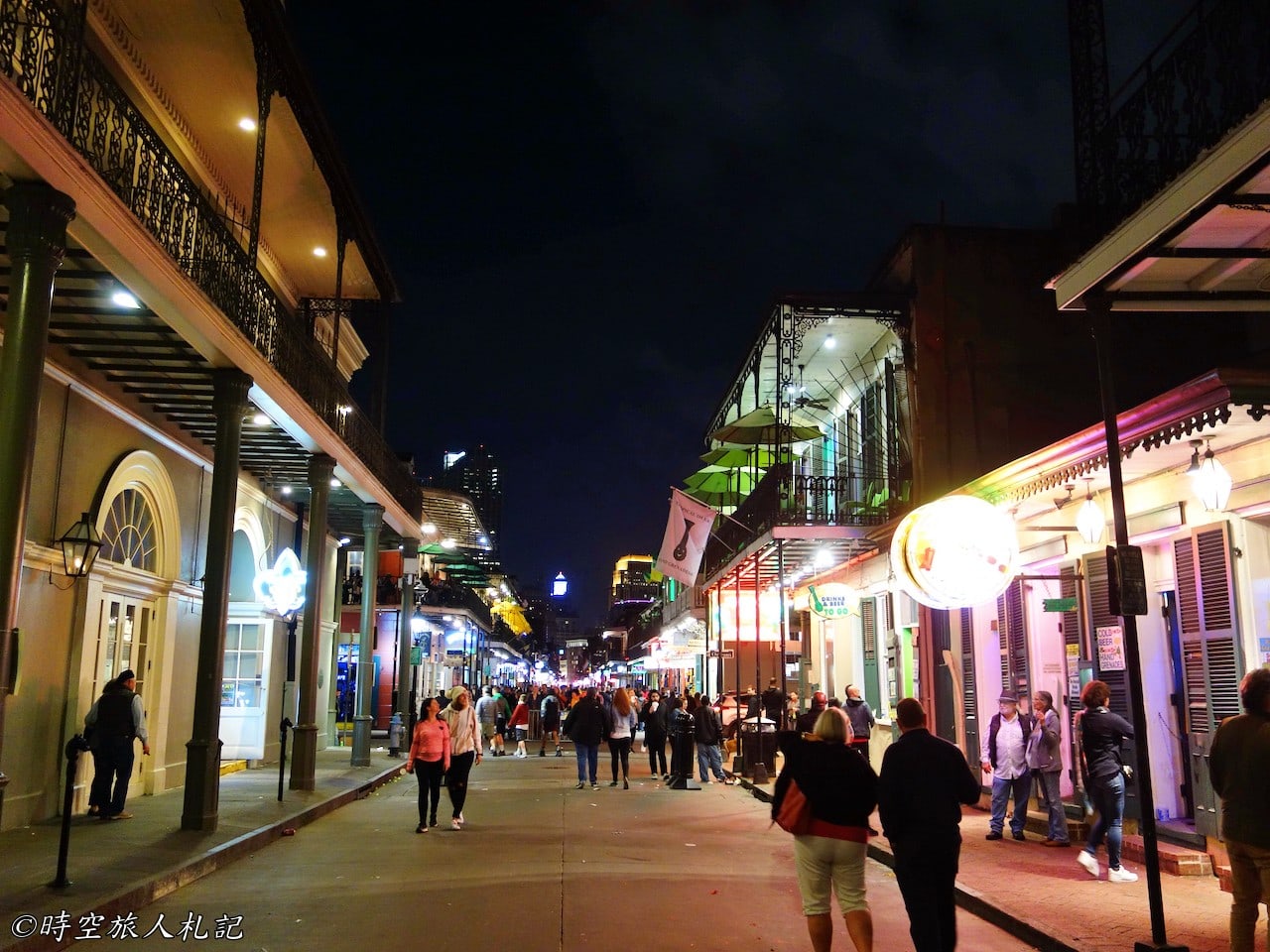
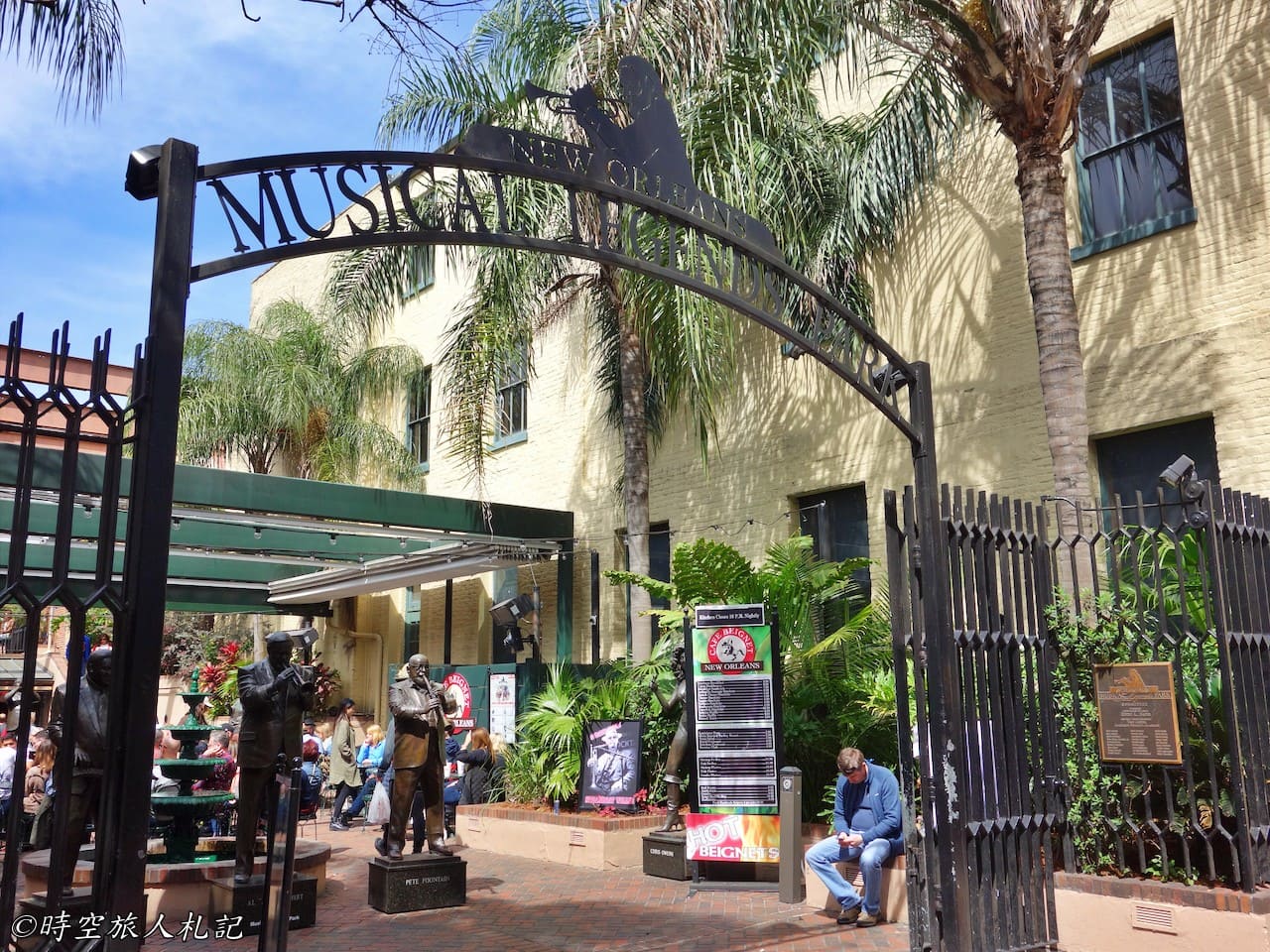

In the evening, the French Quarter has another very popular activity, which is listening to ghost stories. Due to its long history and the local legends of voodoo and slavery, the French Quarter has many ghost stories. If your English is good enough, you can join a ghost tour. At 11 PM, the guide takes everyone around to visit haunted old houses.
Ghost Story Itinerary
Royal Street | Museums
If you have time, I also recommend visiting the museums here. We went to the Louisiana State Museum, the New Orleans Historical Museum, the Voodoo Museum, and others, all located on the streets mentioned earlier. New Orleans is an ancient city in the southern United States, passing between France and Spain several times since the European colonial era until it was sold to the United States in 1803. Due to its important port transport, a significant number of merchants and immigrants from Europe flooded in during the 19th century. The economy was primarily based on slavery and agriculture, which took a hit during the Civil War. Now, it's primarily a tourist city, considered a classic example of a melting pot. Both the State Museum and the Historical Museum are well worth spending half a day to understand the history of New Orleans, especially since the Historical Museum offers free exhibitions and is located in the middle of Royal Street.


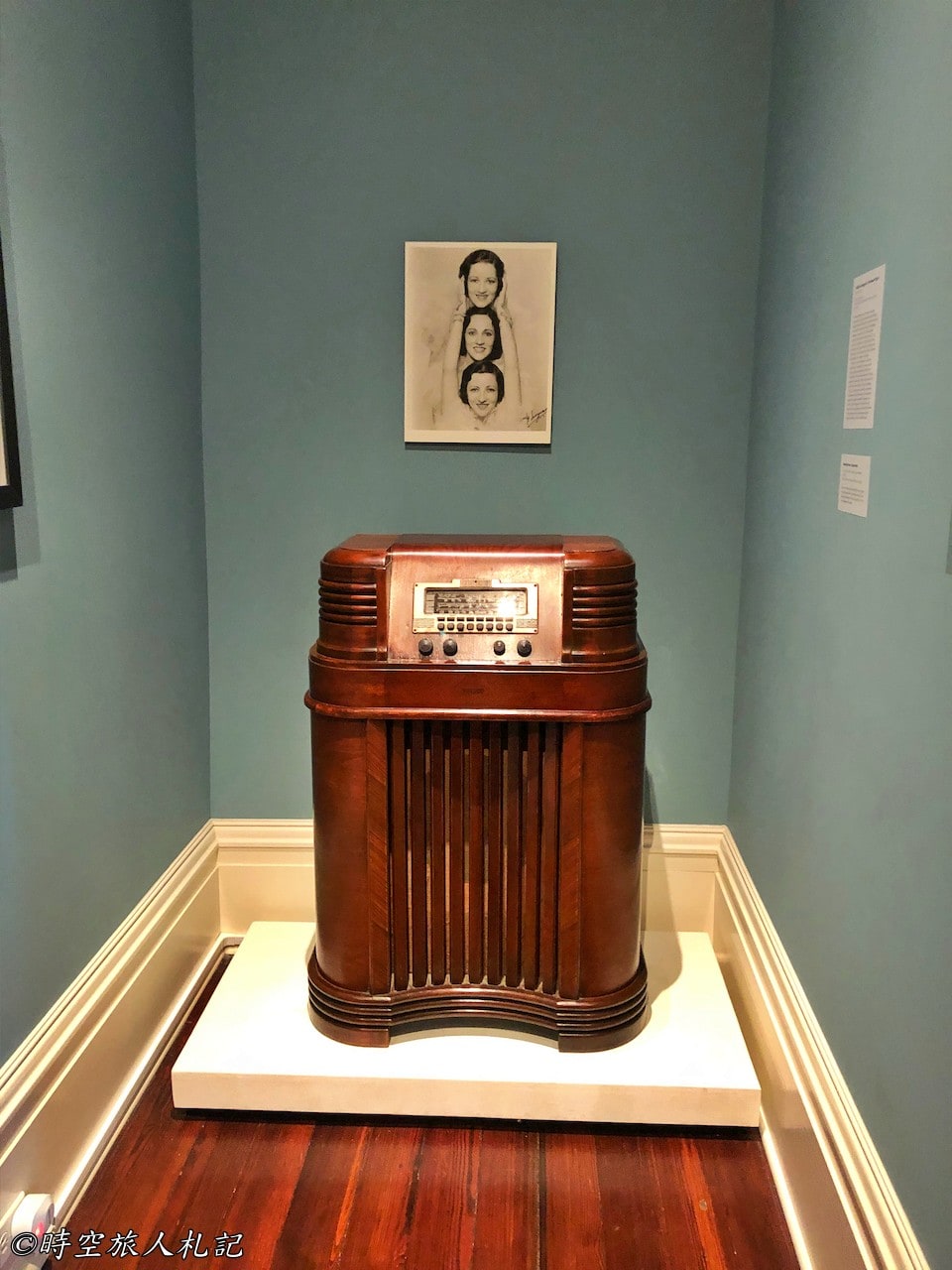
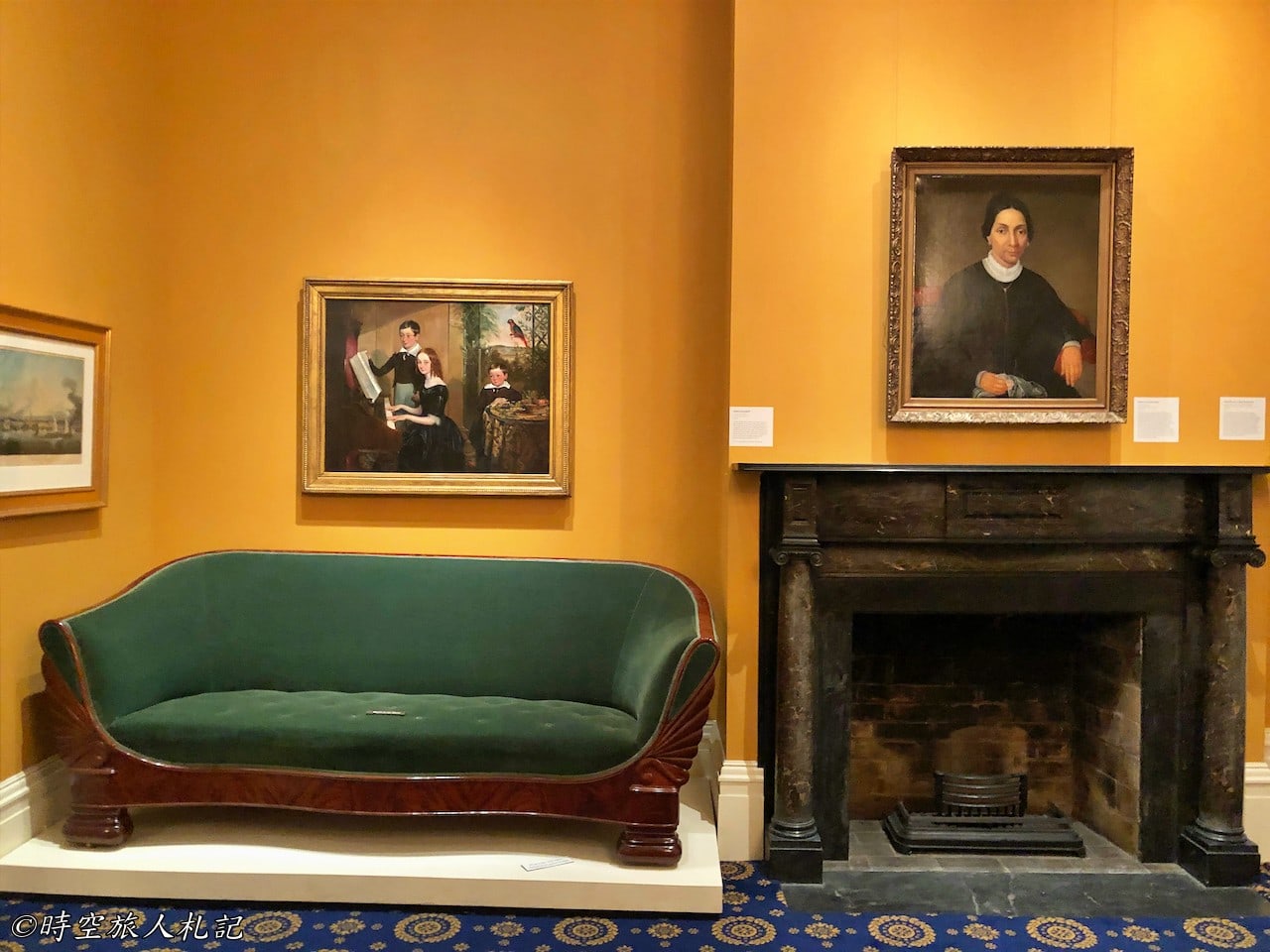
French market
The French Market is located on the northern side of the city center. It is the oldest public market in the United States and a great place to explore. Here, you can find fresh local ingredients, handicrafts, and artworks. The food stalls inside the market offer a variety of authentic New Orleans cuisine, including alligator meat hot dogs.
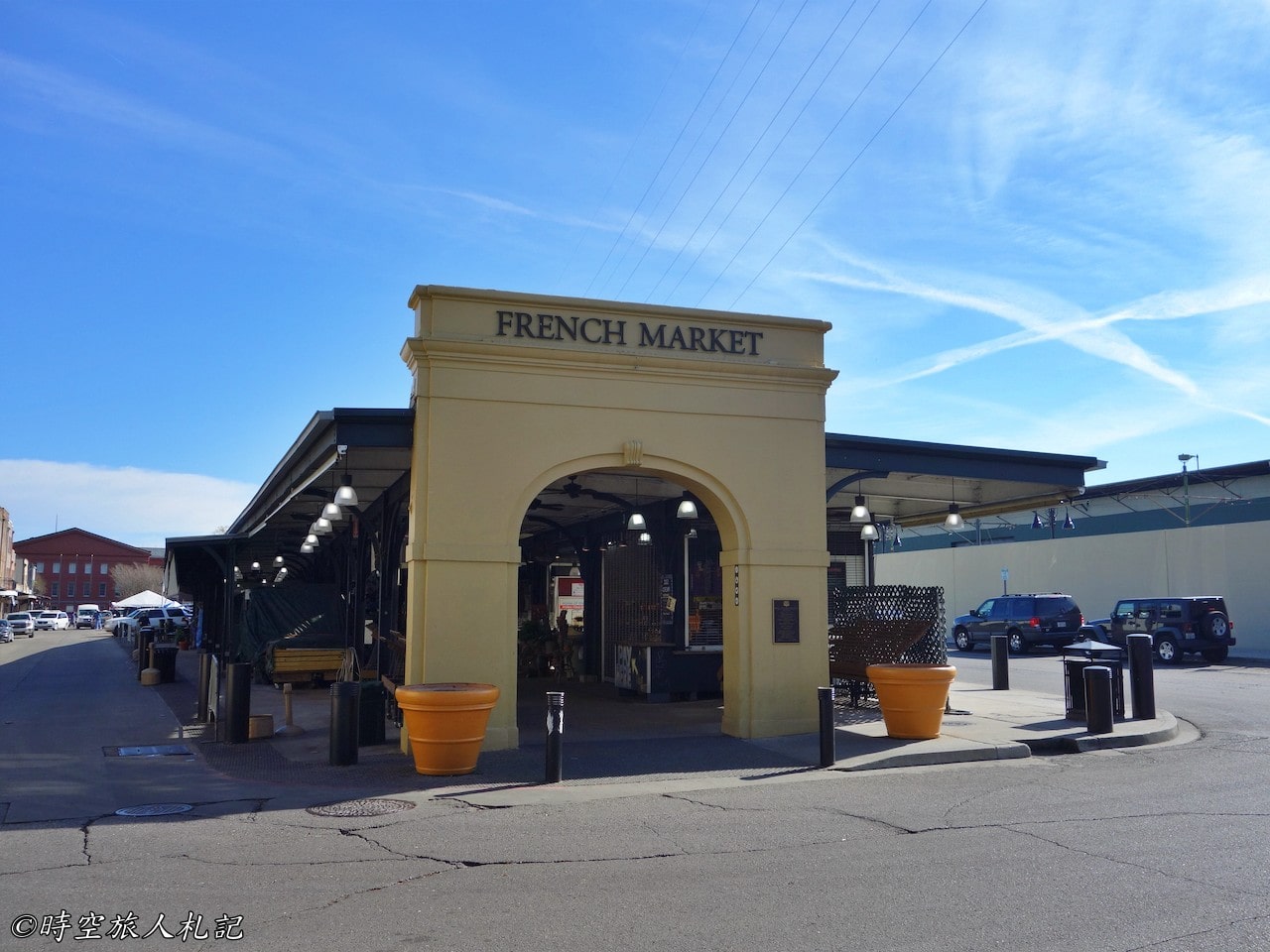
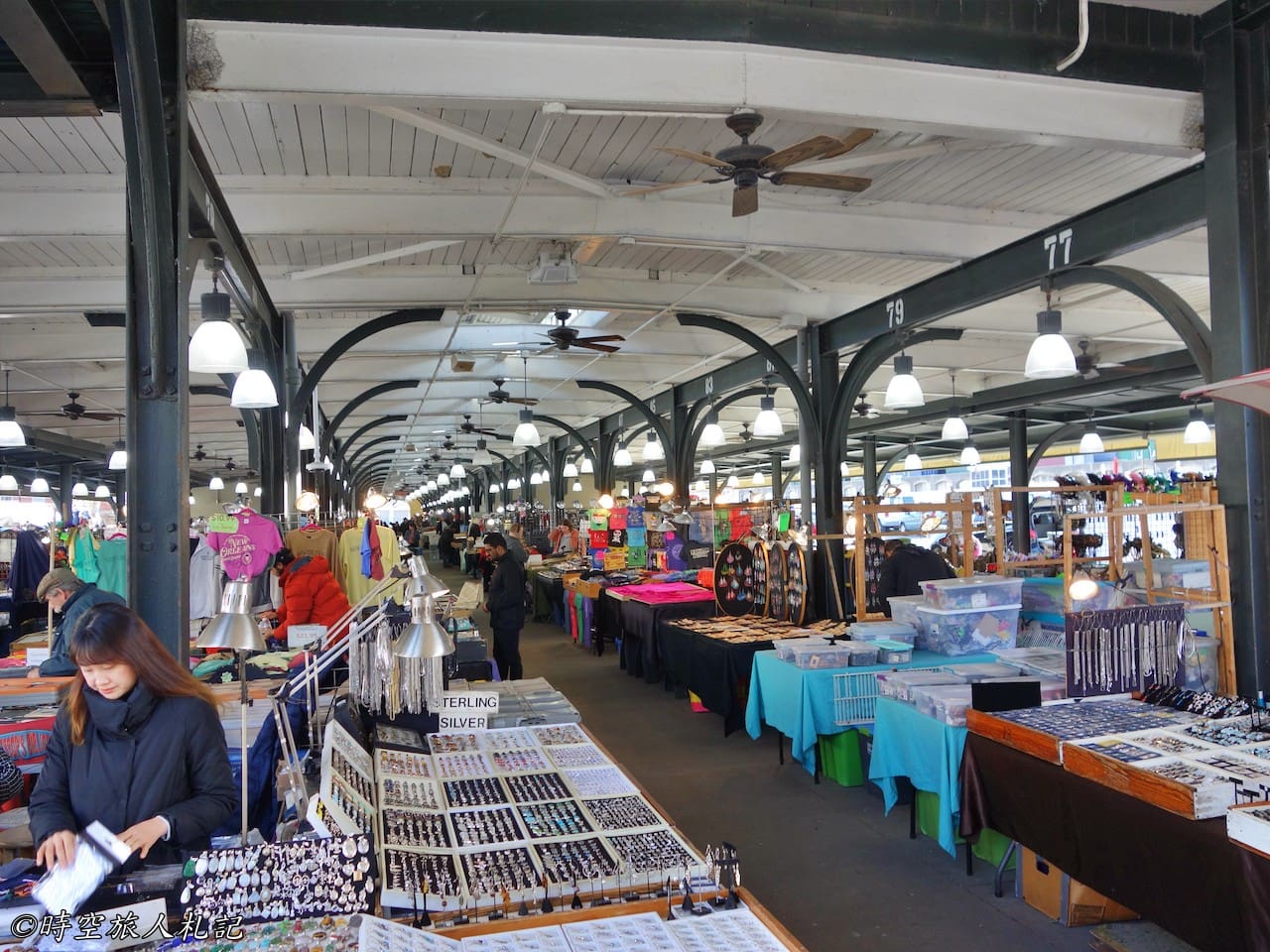
Must-see | Preservation Hall | Come listen to some jazz!
Listening to jazz at Preservation Hall is one of the best things to do in New Orleans. New Orleans is the birthplace of jazz, and the Preservation Hall's performance was the best jazz I've ever heard. I originally planned to listen to only one show, but because it was so good, I scheduled another time the next day to come back and listen to it again. The program varies from day to day. the official websiteEnquire about the program schedule.
Preservation Hall has limited seating, and in reality, the venue is just a slightly larger room, so most people end up standing. The forty-minute performance, plus the hour or more of queueing required for entry, actually means standing for a long time. However, once the performance starts, you forget even the soreness in your feet.
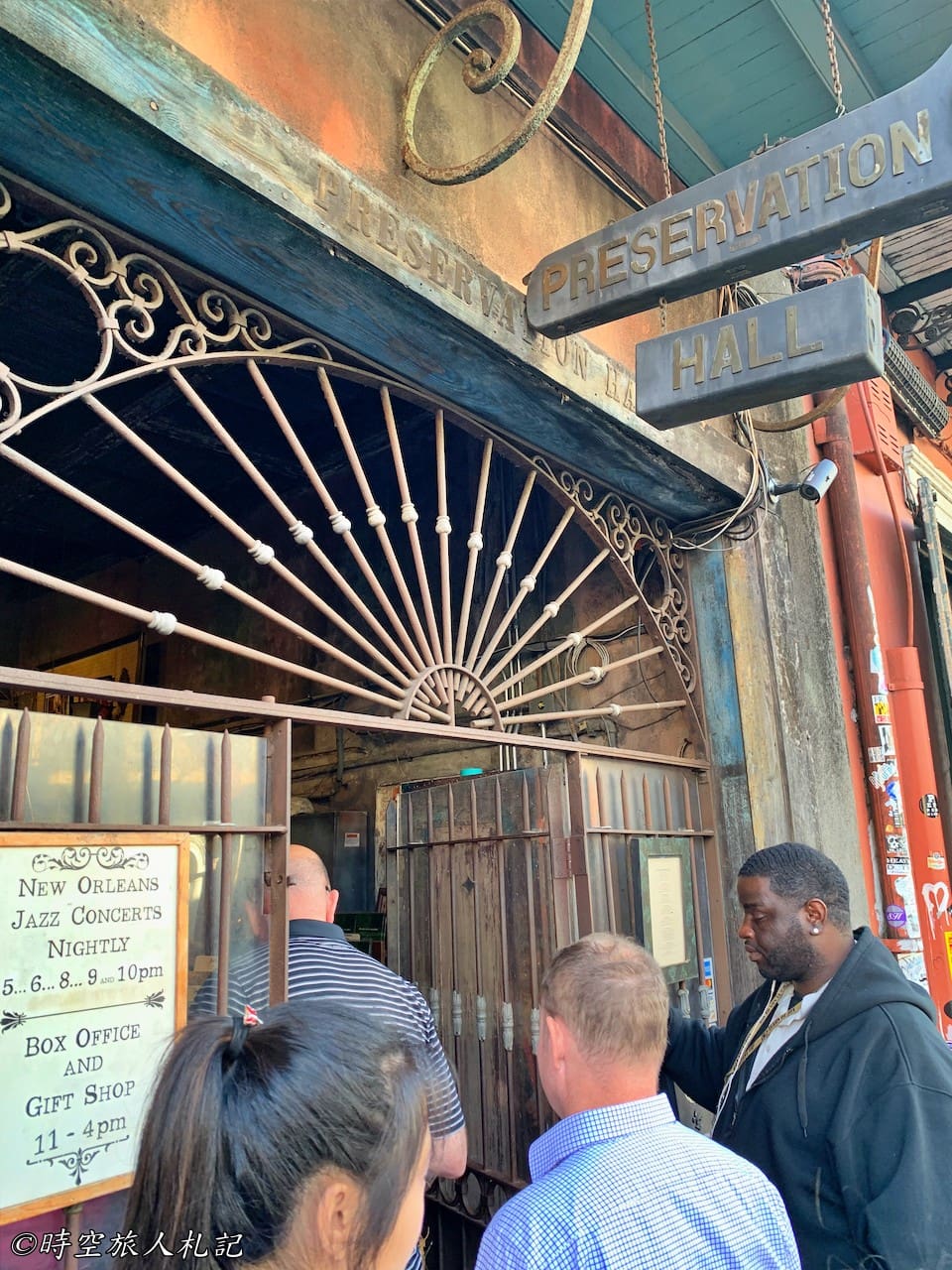
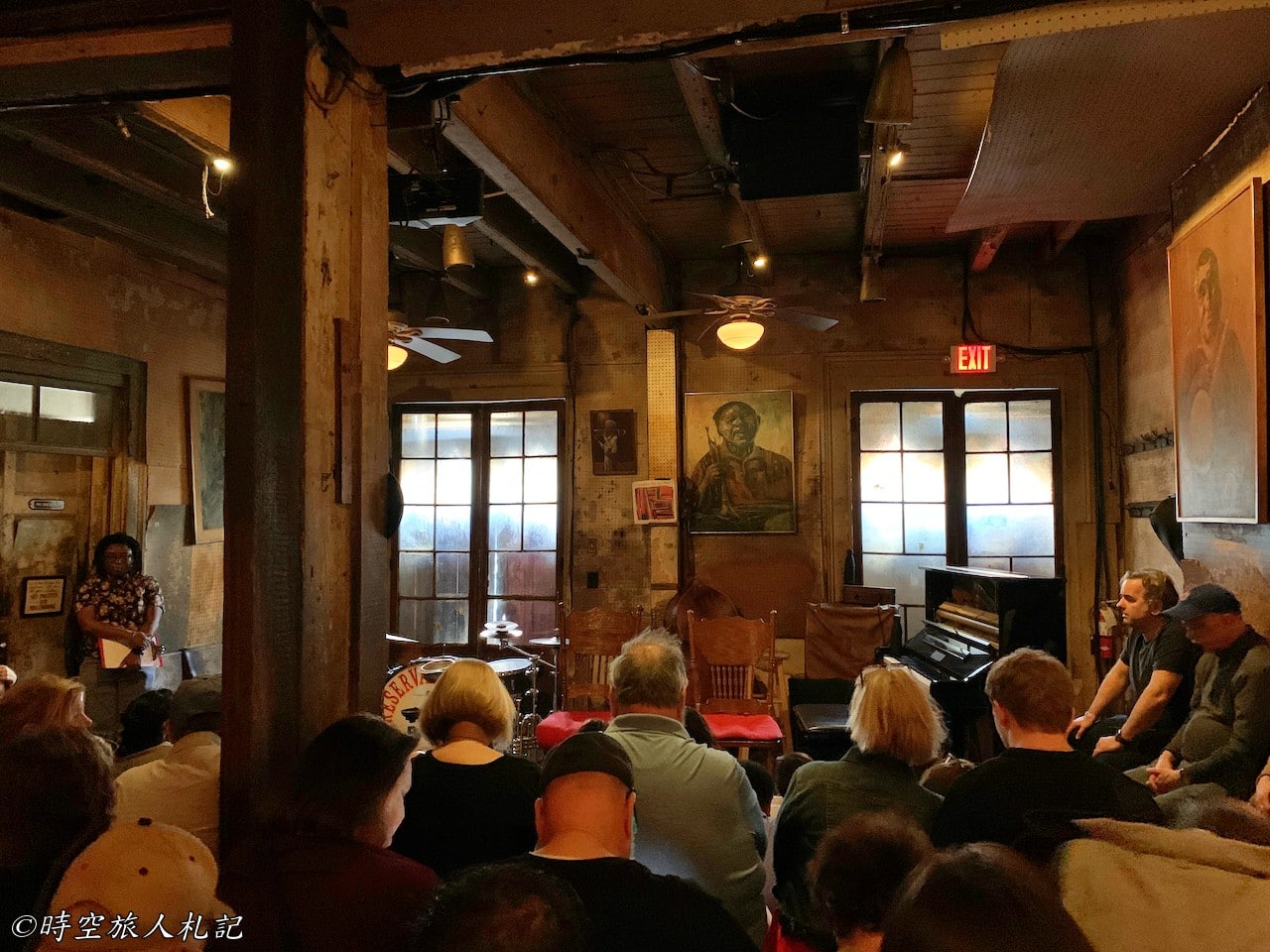
Although the wait in line is long, it's never boring. While we were queueing, there was always an excited crowd of people from a small parade passing by. You can also buy drinks from a nearby bar to take inside with you.
Garden District
The Garden District, also known as the Uptown area, is New Orleans' affluent residential community, formed during the prosperity before the American Civil War. In contrast to the bustling French Quarter, the main attraction here is the 19th-century architecture that blends European and American Southern styles, particularly found between St. Charles Avenue and Magazine Street. The mansions, cemeteries, and streetcars in this area have all been classic scenes in many movies. Transportation between the French Quarter and the Garden District can be done via the public streetcar, which is in itself one of the classic experiences of visiting the Garden District.
Lafayette cemetery no. 1
Lafayette Cemetery No.1 is one of the most popular landmarks in the area, and it is the oldest municipal cemetery in New Orleans, established in 1833. The pathways were originally paved with shells, but now only broken concrete remains. For Americans, cemeteries are interesting tourist spots, and this place is notable for the variety of tomb shapes, not all of which are crosses. This is because it contains the remains of immigrants from 25 different countries.
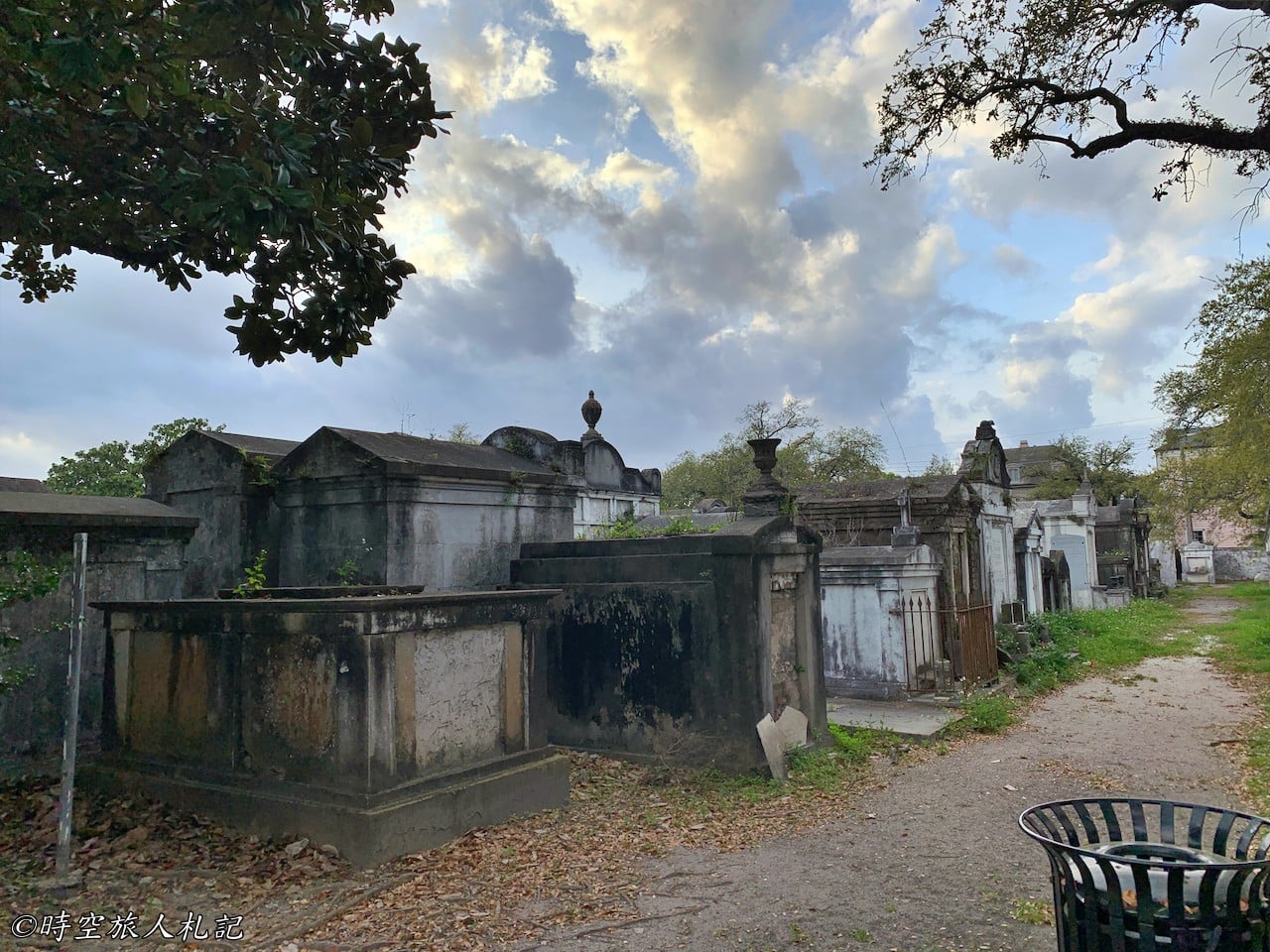
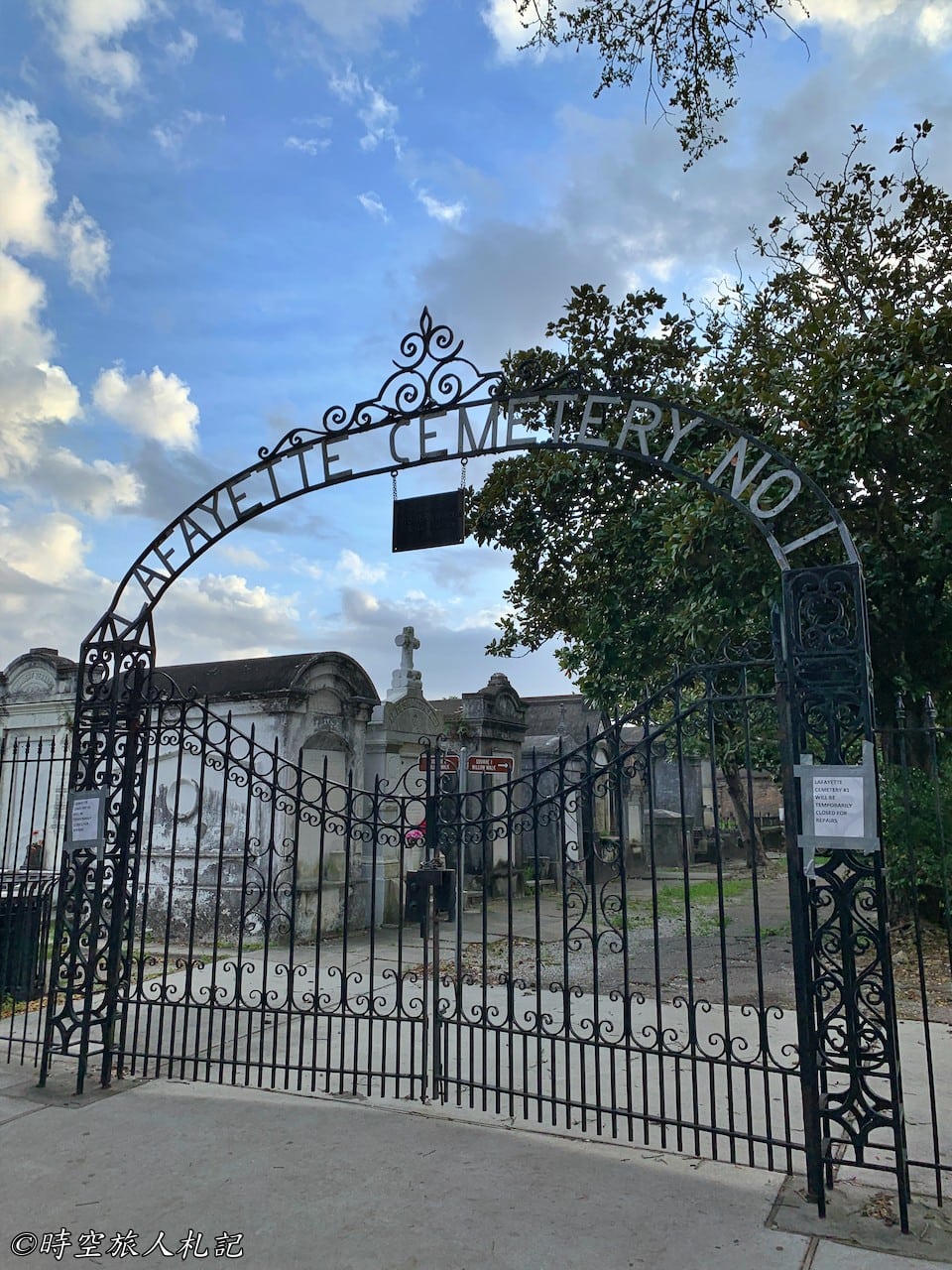
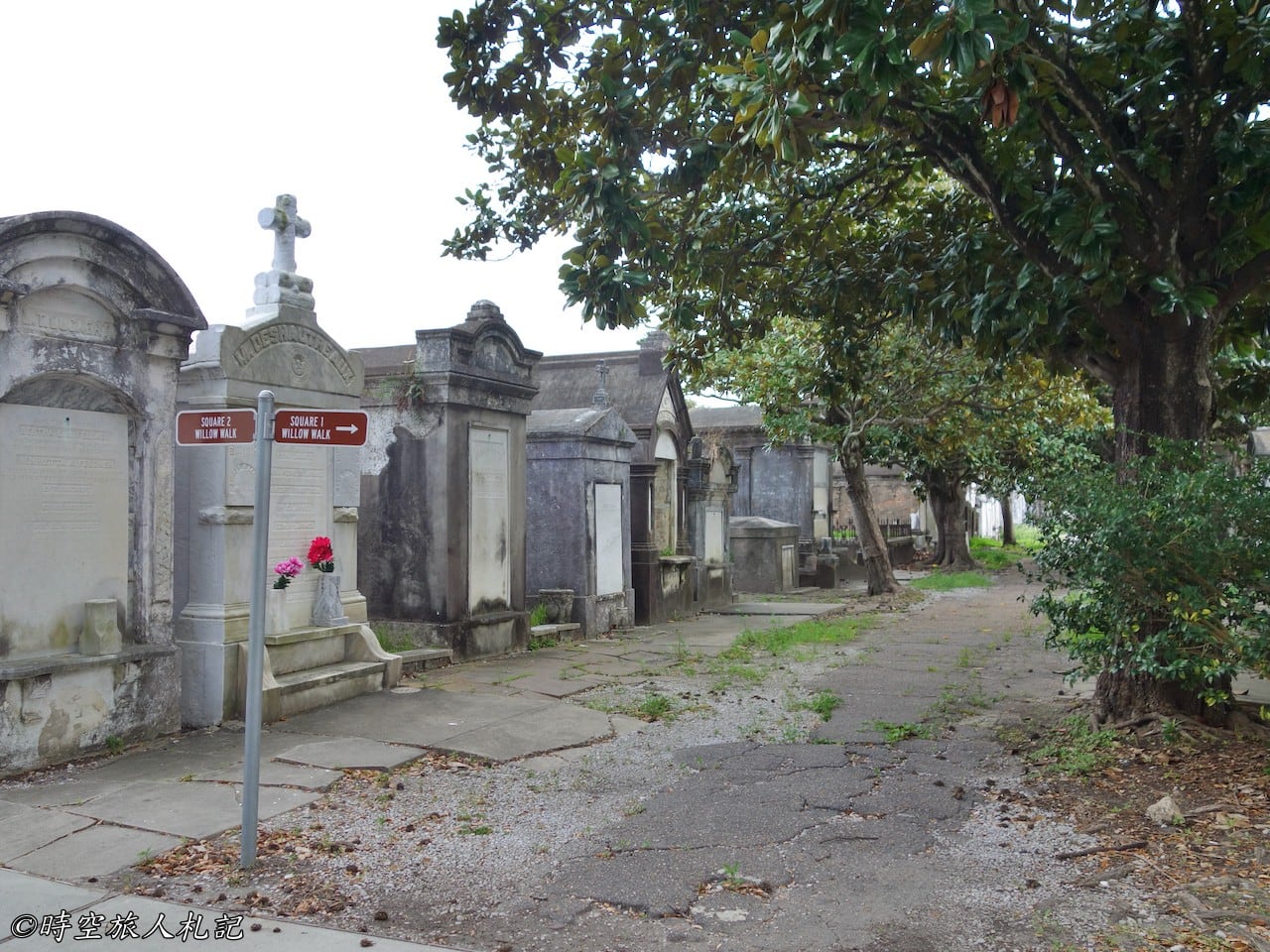
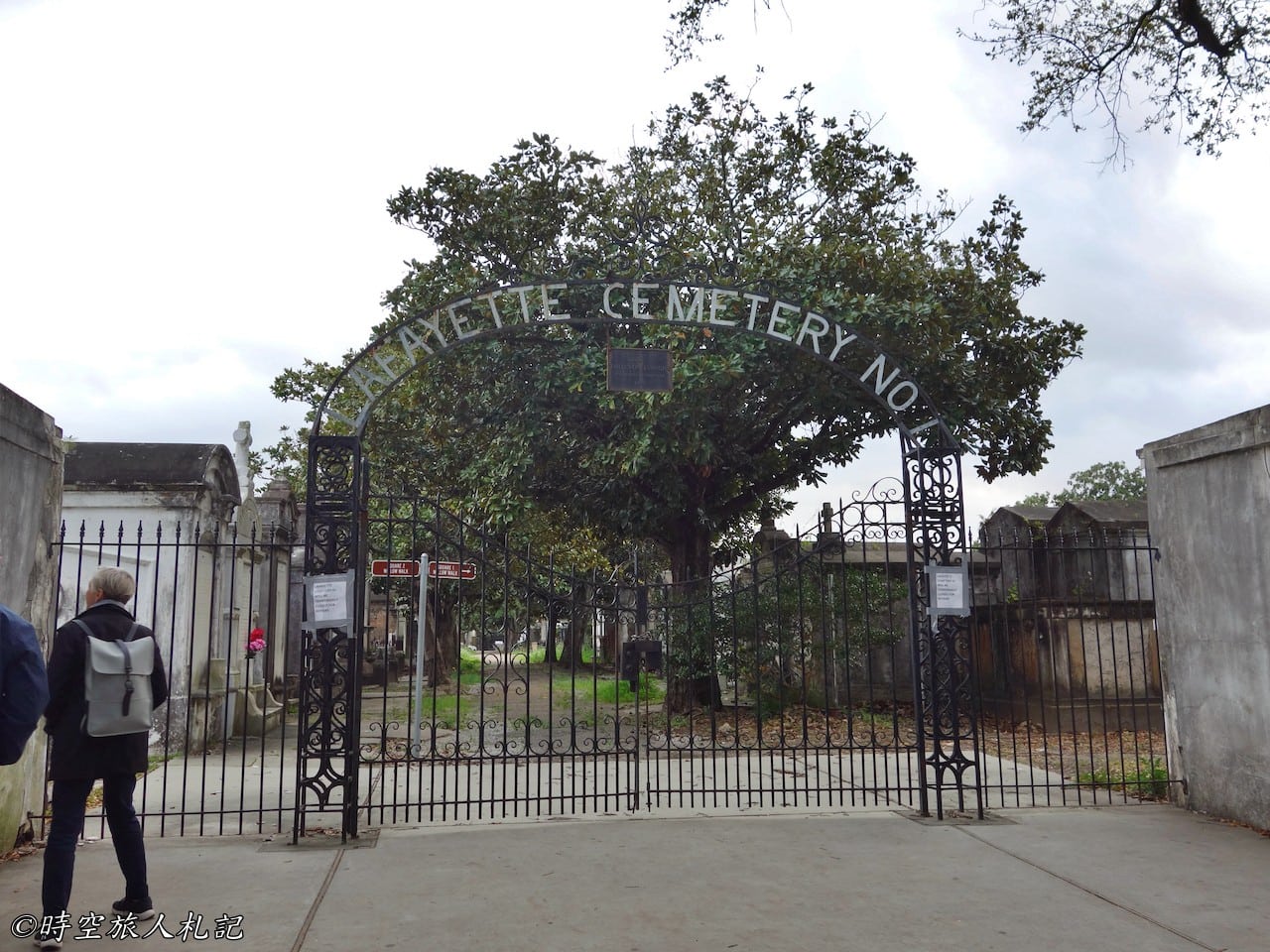
St. Charles Avenue
The picturesque St. Charles Avenue is one of the three main thoroughfares in New Orleans, and riding the streetcar with its mahogany seats along St. Charles Avenue is considered a tourist activity in itself. In the Garden District, St. Charles Avenue connects a series of antebellum mansions. This area is essentially a residential district, with 19th-century homes standing tall before your eyes. Many of these mansions have historical markers at their entrances, telling the story of their past. This is a favorite spot for history buffs and architecture enthusiasts to take photos and check in. Taking a stroll here, admiring the mansions and the surrounding flora, is a delightful experience.


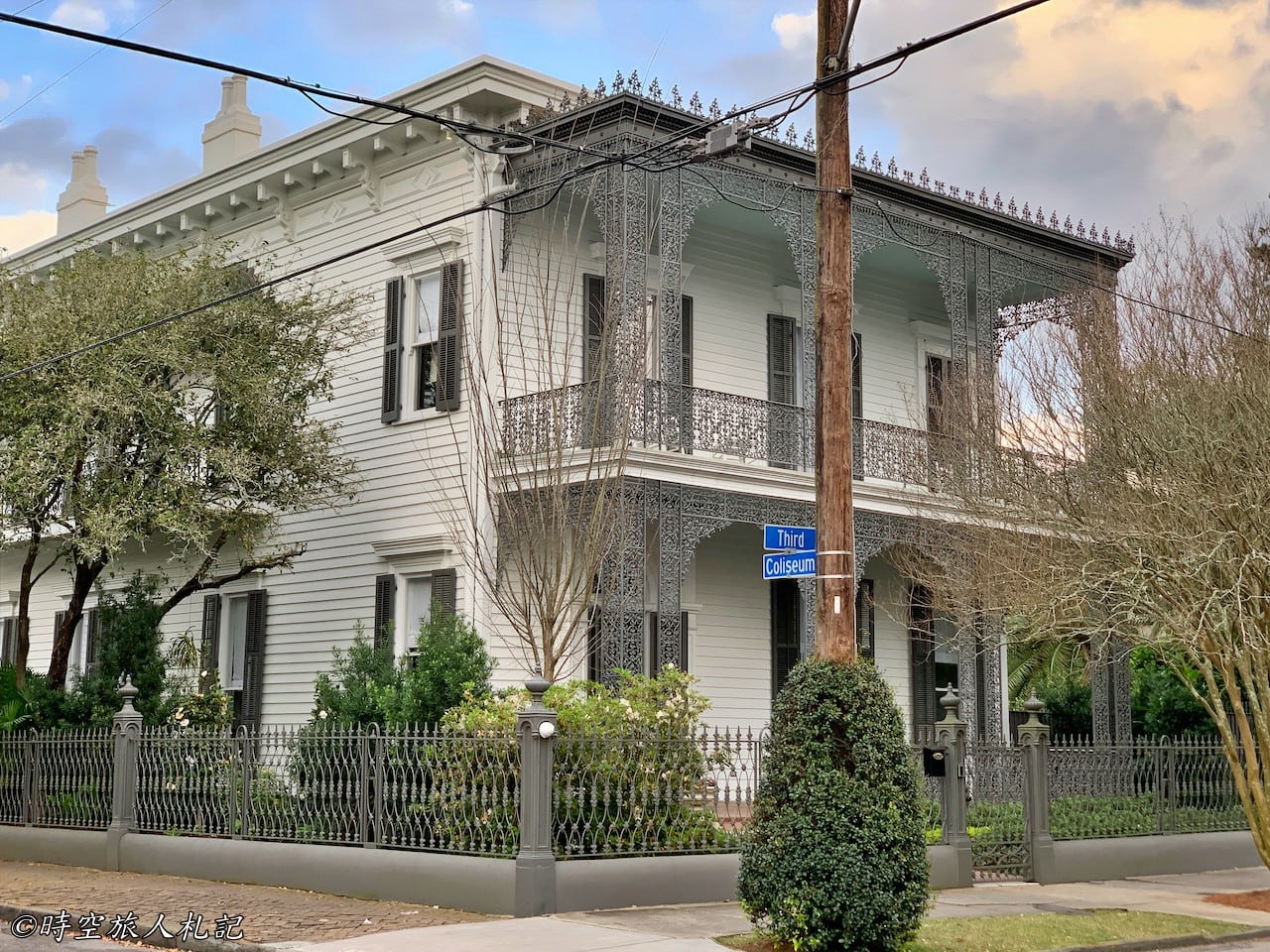
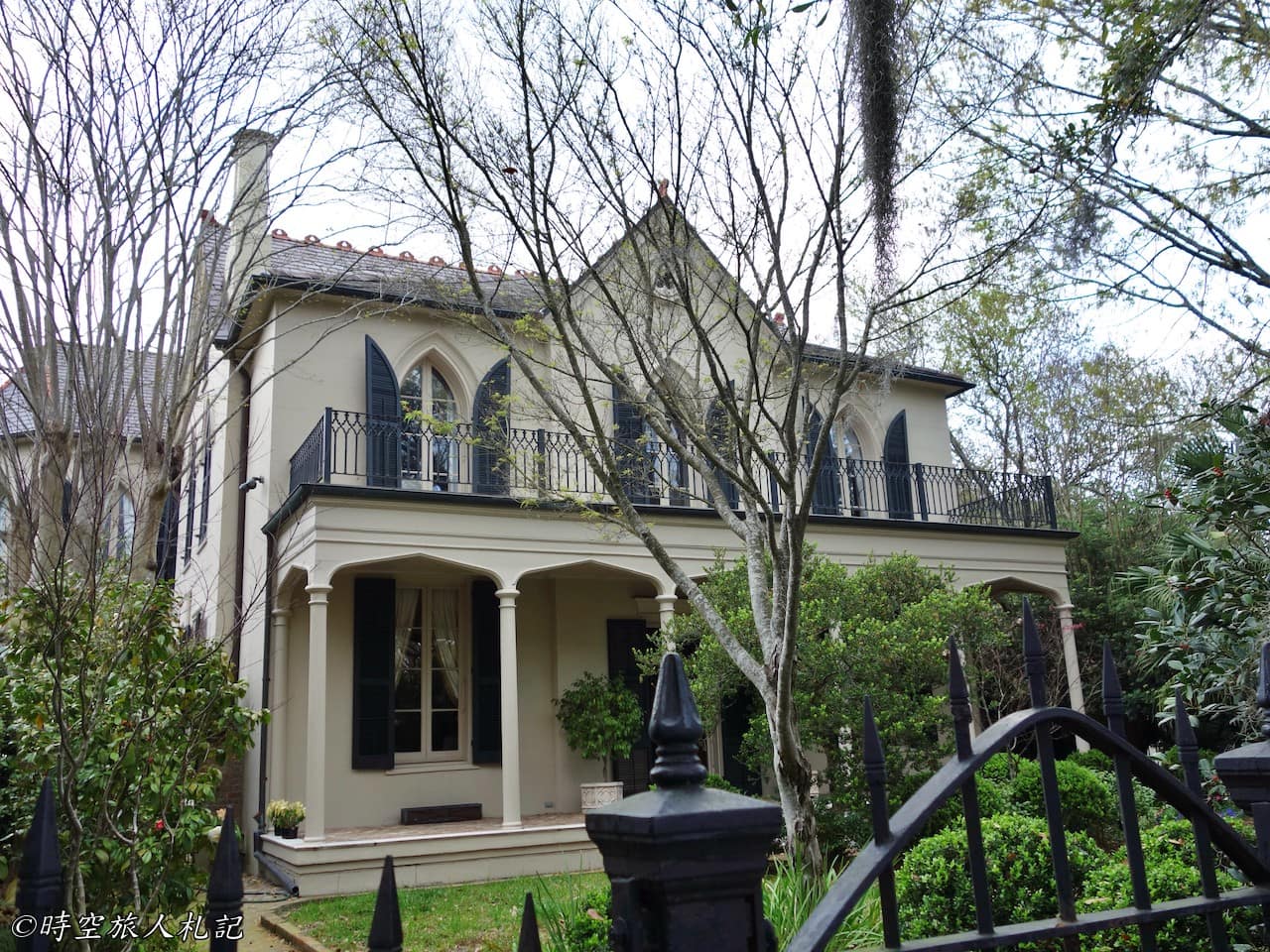
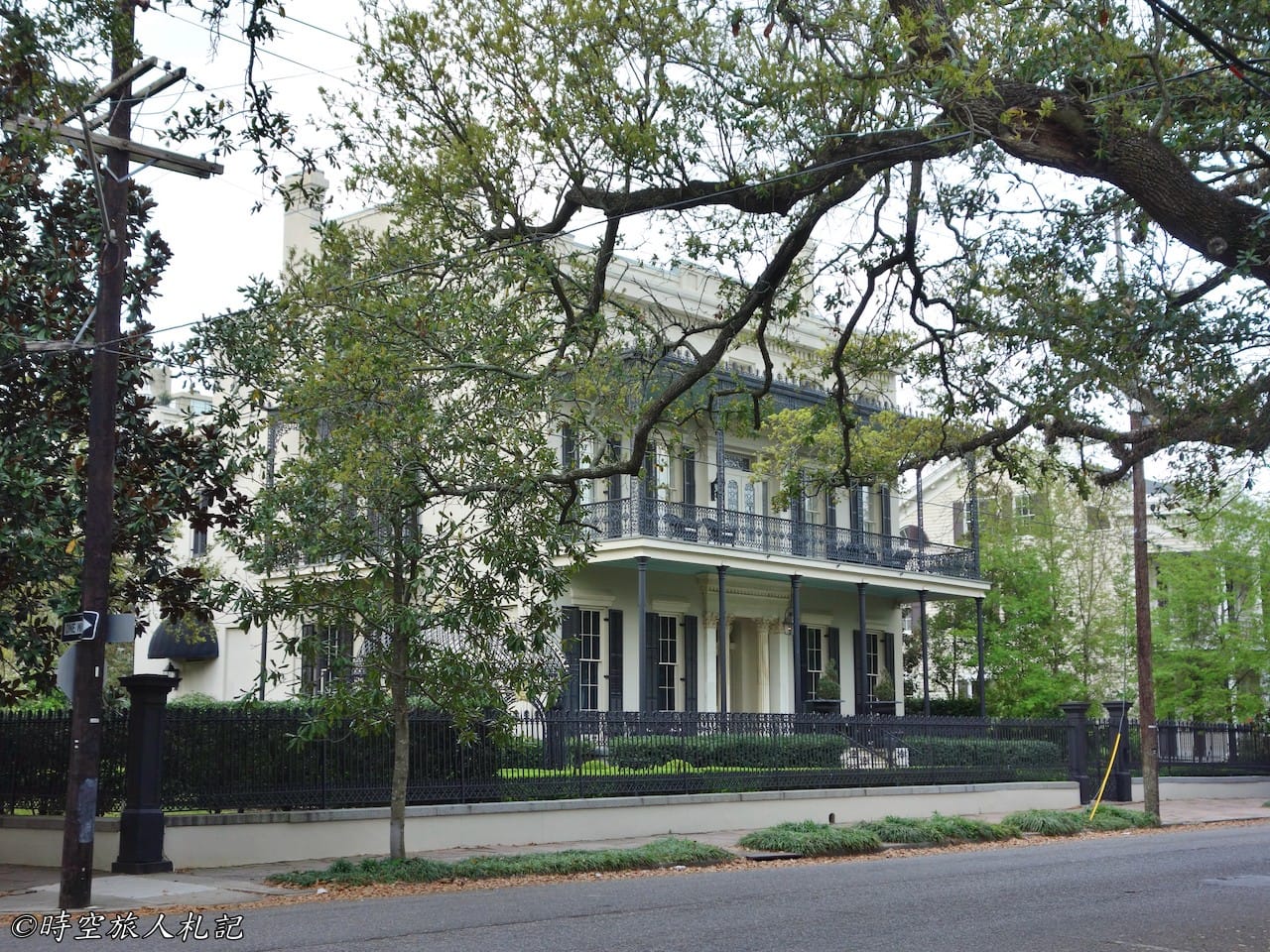
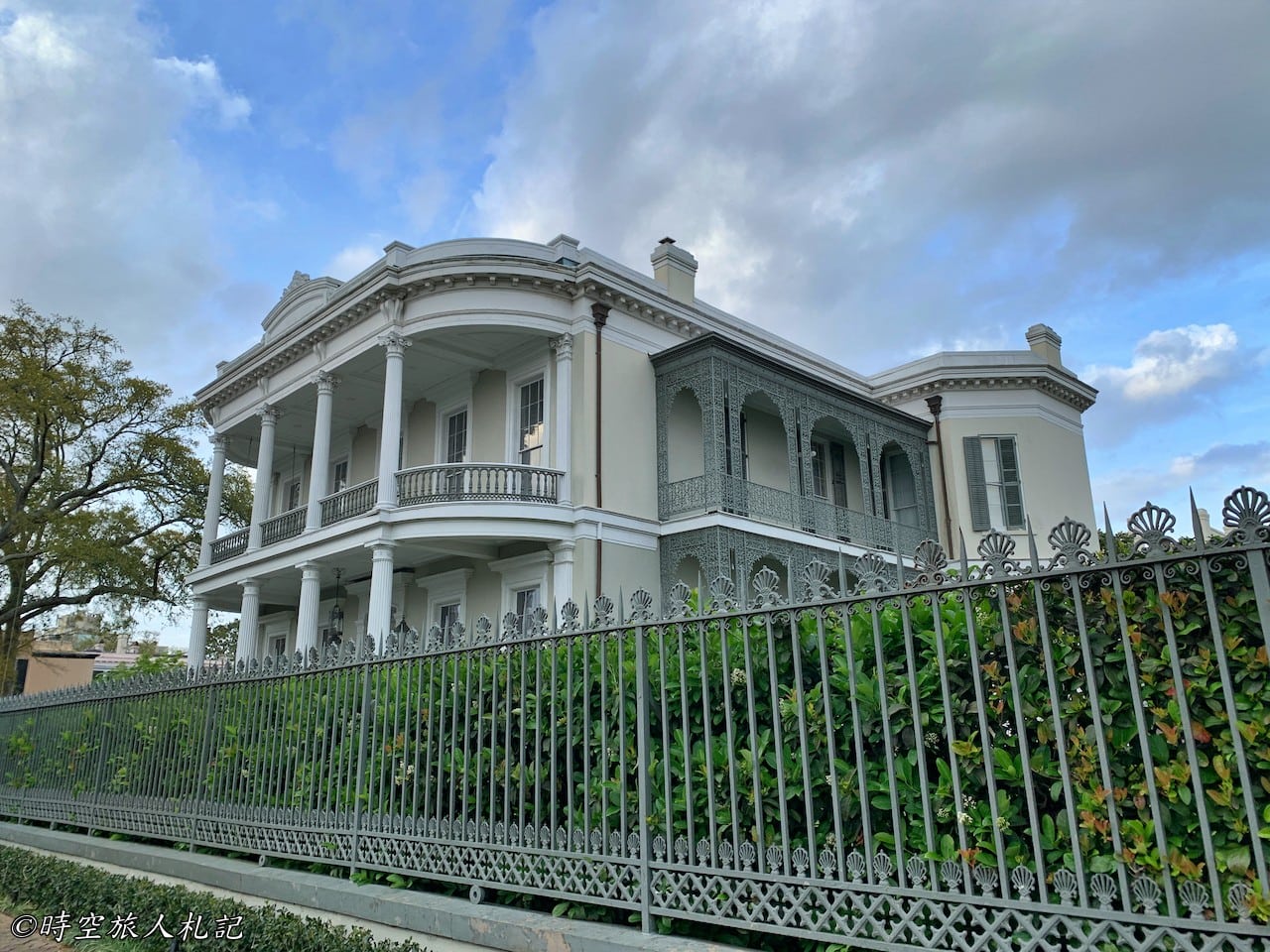
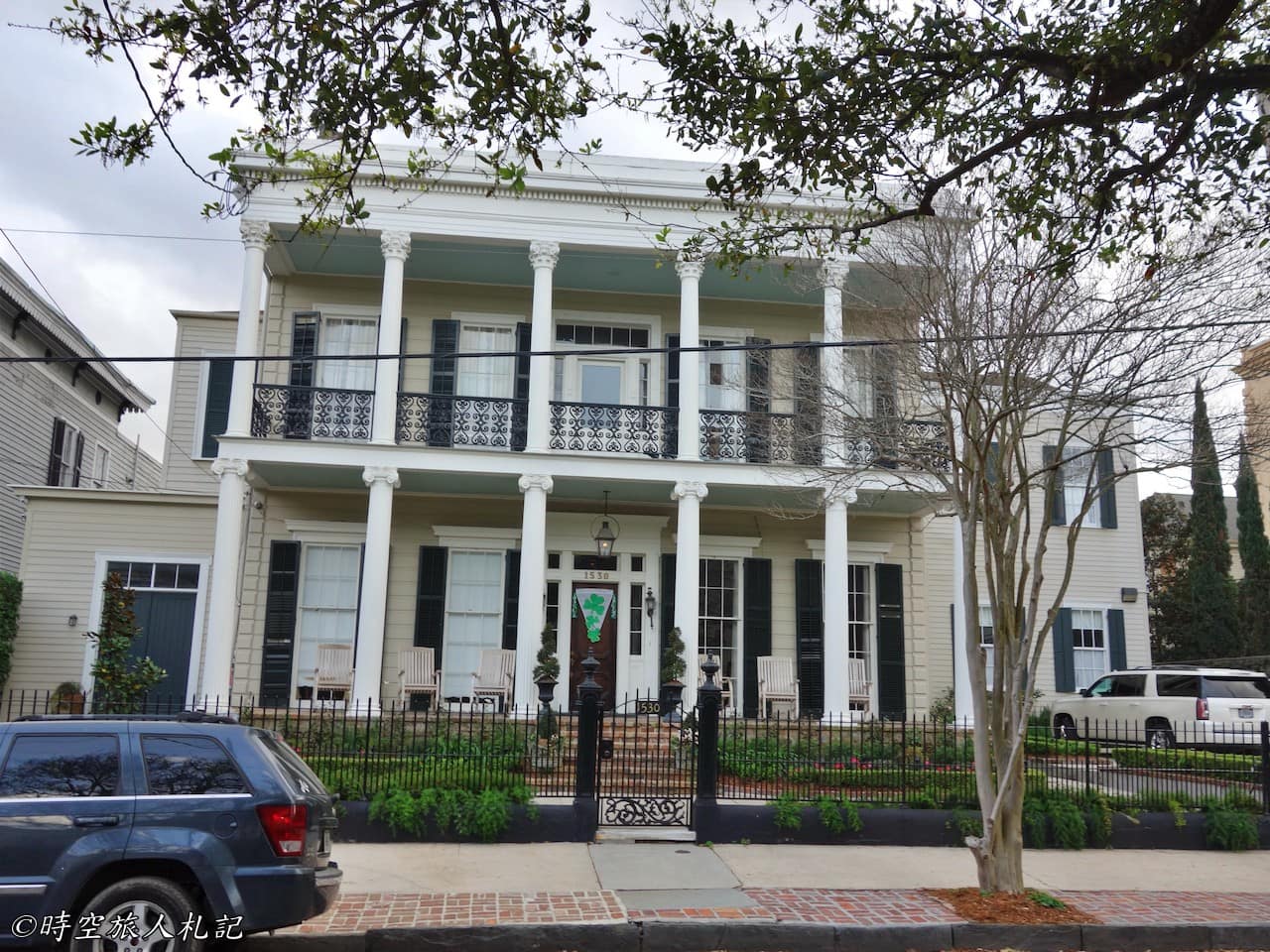
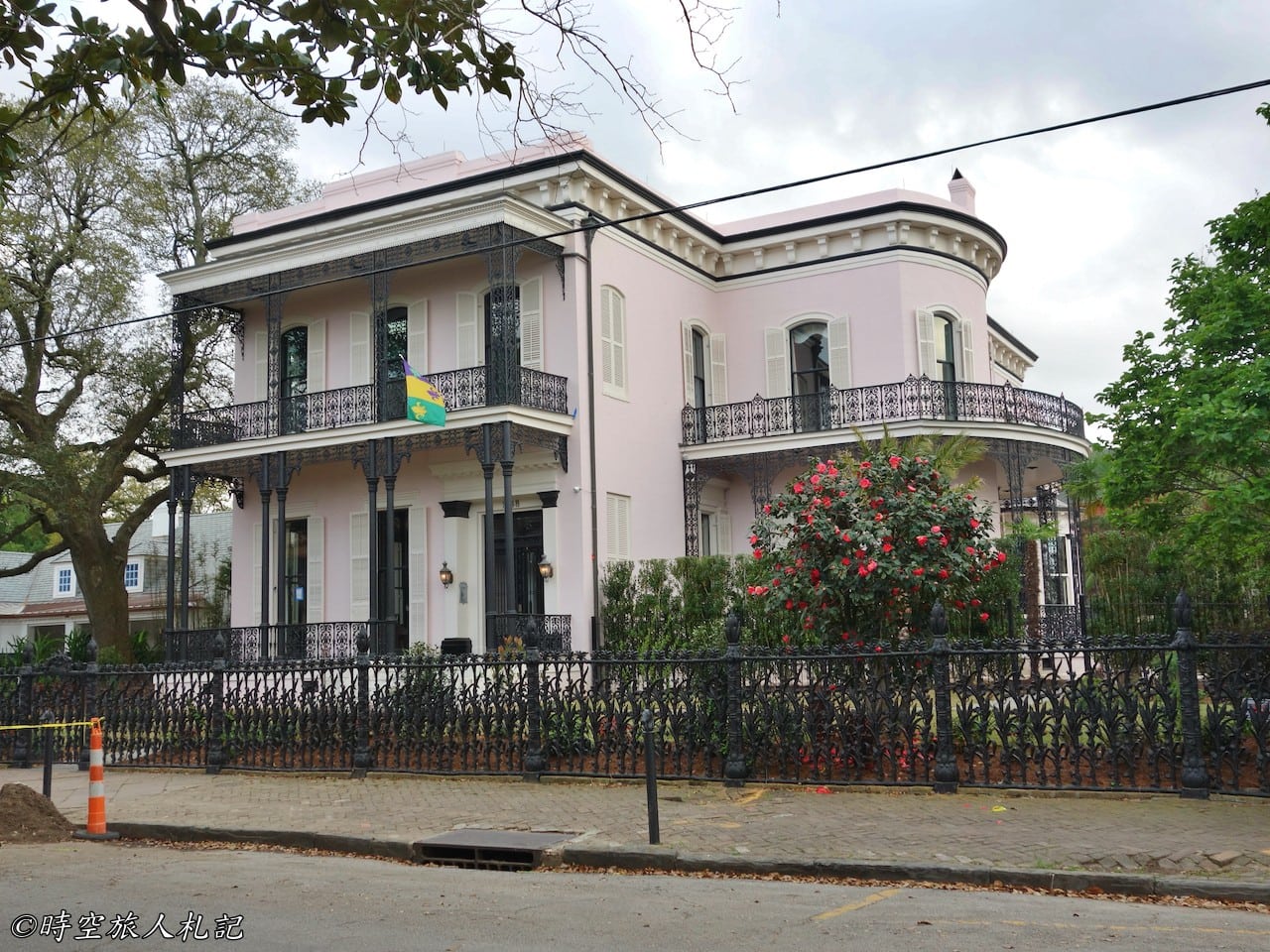
St. Charles Avenue extends southwest all the way to Lafayette Square in the Central Business District, and you can pass by this location on the streetcar as well. Lafayette Square has a long history, established by the Spanish colonial government in 1788. Opposite it is the former City Hall, Gallier Hall, where live music performances are held from time to time.
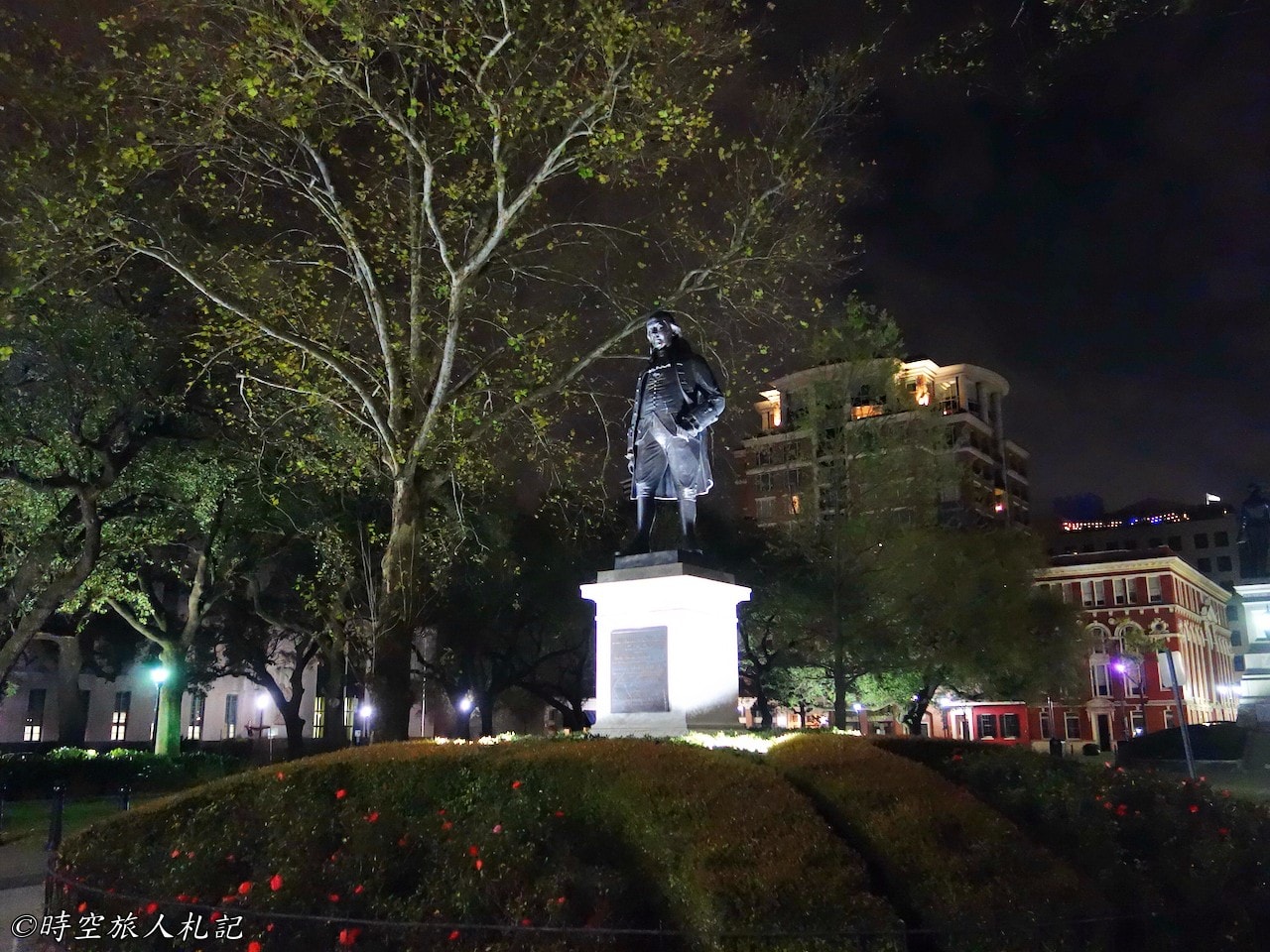

Magazine Street
Magazine Street is lined with boutique shops and cafés. If you enjoy shopping, you can spend quite a bit of time here browsing through jewelry, antiques, and then grabbing a meal.

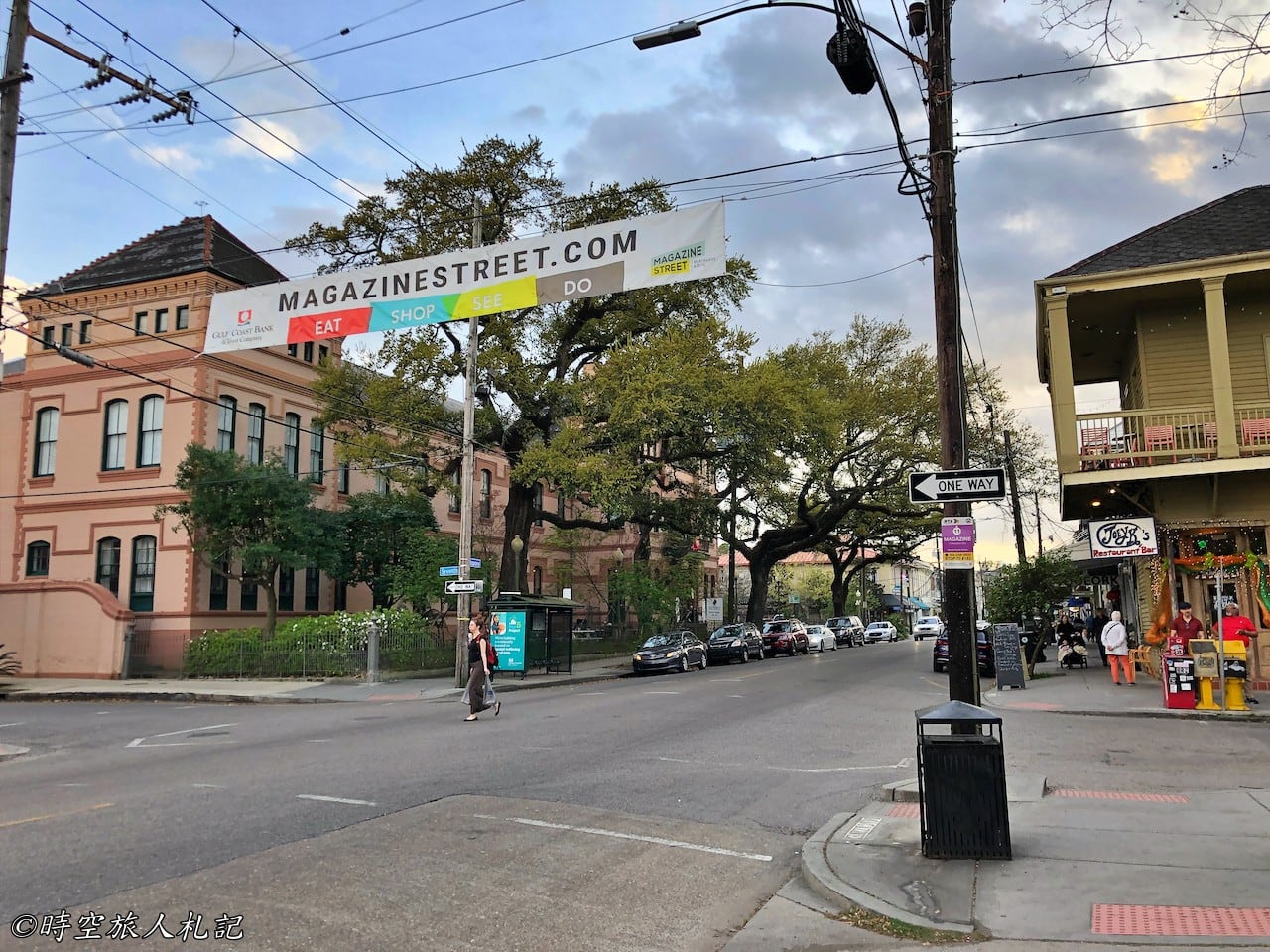
Must See | Mardi Gras World
The Mardi Gras carnival is the most important festive event in New Orleans, said to be the world's second-largest carnival, and is considered a cultural landmark of New Orleans. During the event, dozens of elaborately decorated floats with themes carry people in costume singing and dancing in celebration. People on the floats throw small gifts like necklaces to the audience on both sides, creating a lively atmosphere. The parade is held annually at different times, mainly between February and March.
When we arrived in New Orleans in early March, we had just missed the carnival. If, like us, you're visiting outside the festive period, you can visit Mardi Gras World, where the floats and props used for Mardi Gras are made. Entry requires joining a guided tour. The tour starts with a video explaining the history of Mardi Gras, followed by a visit inside to see the props and floats being made and stored. Seeing them in person is truly astonishing.
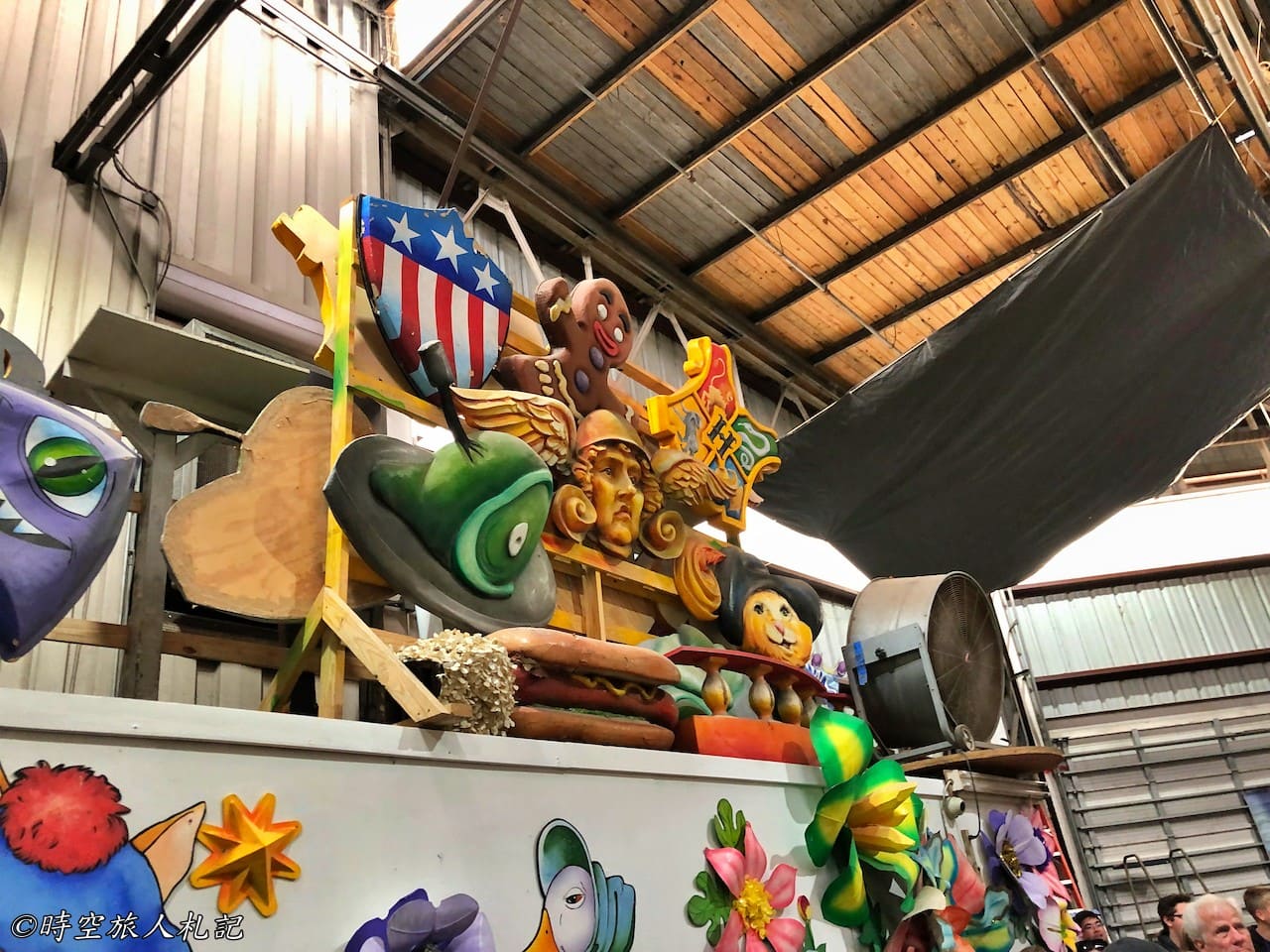
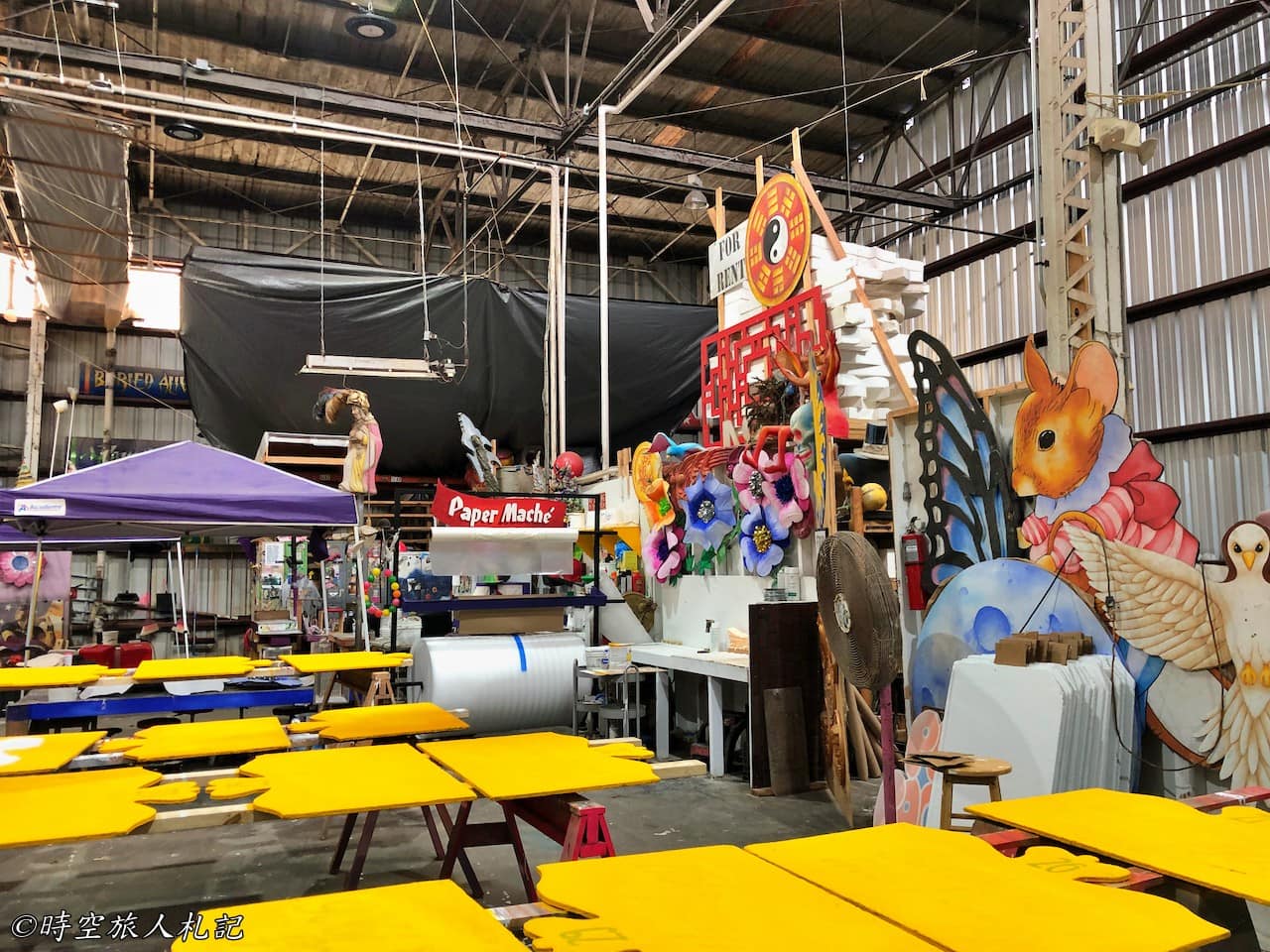


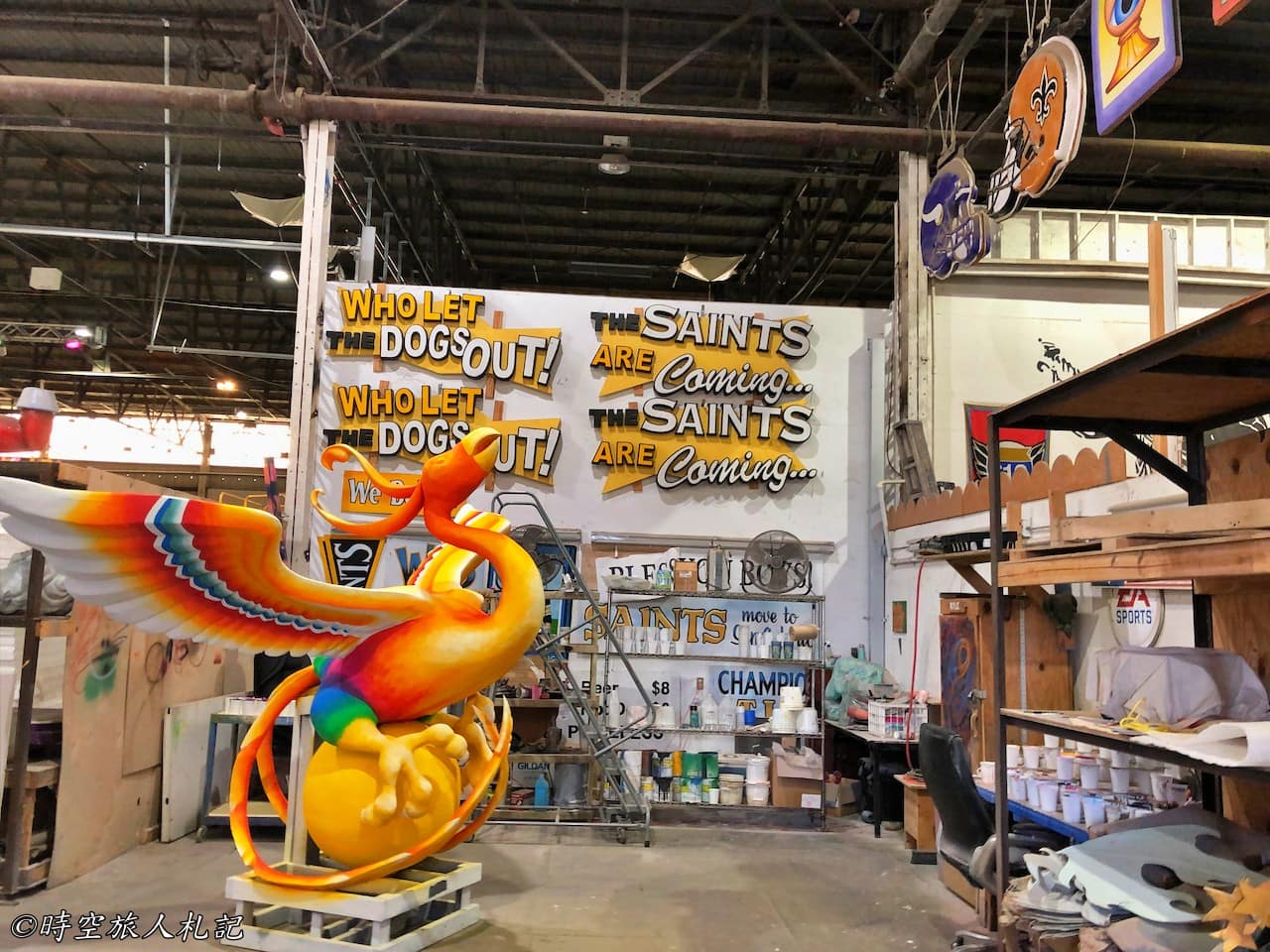
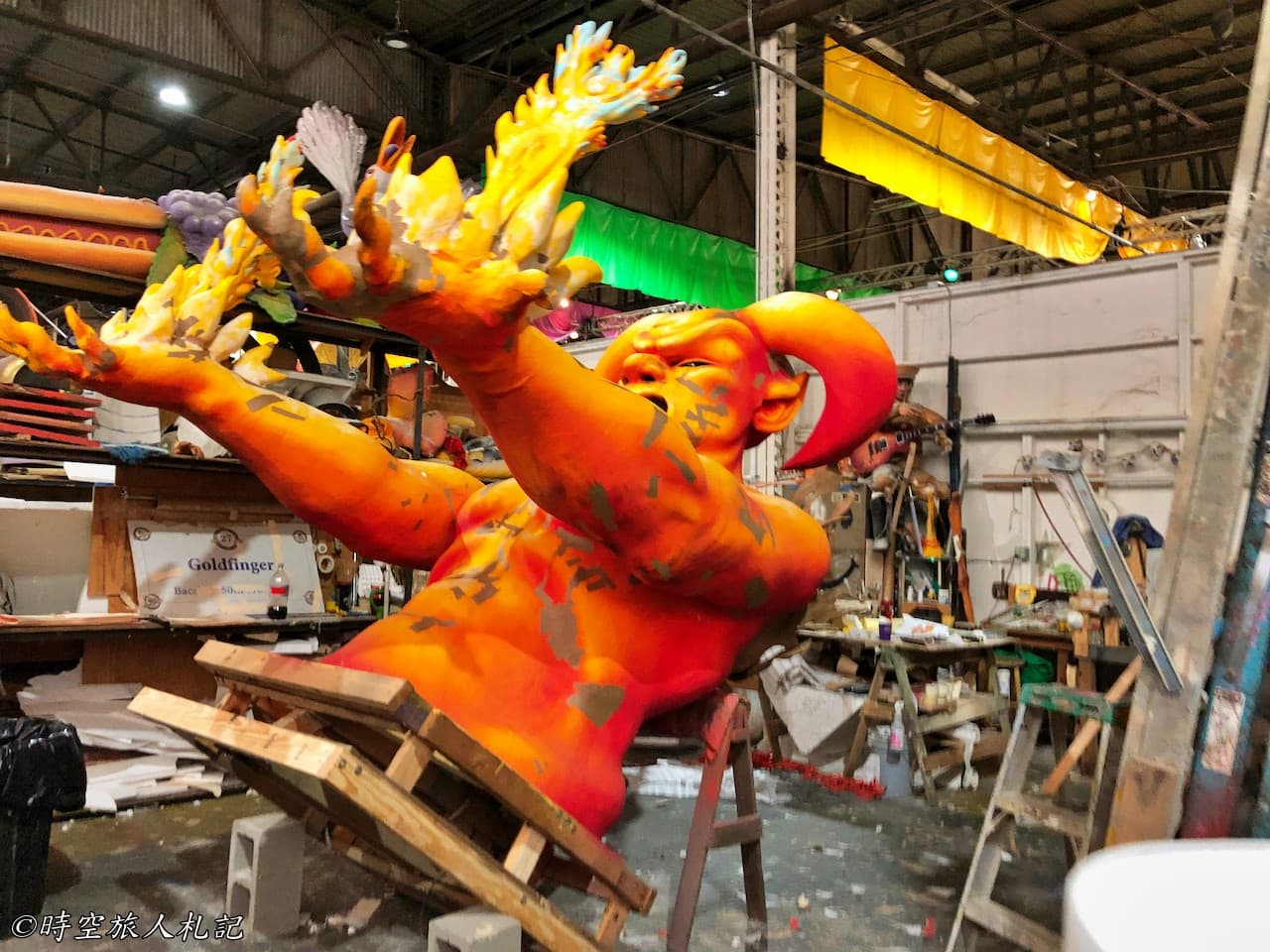
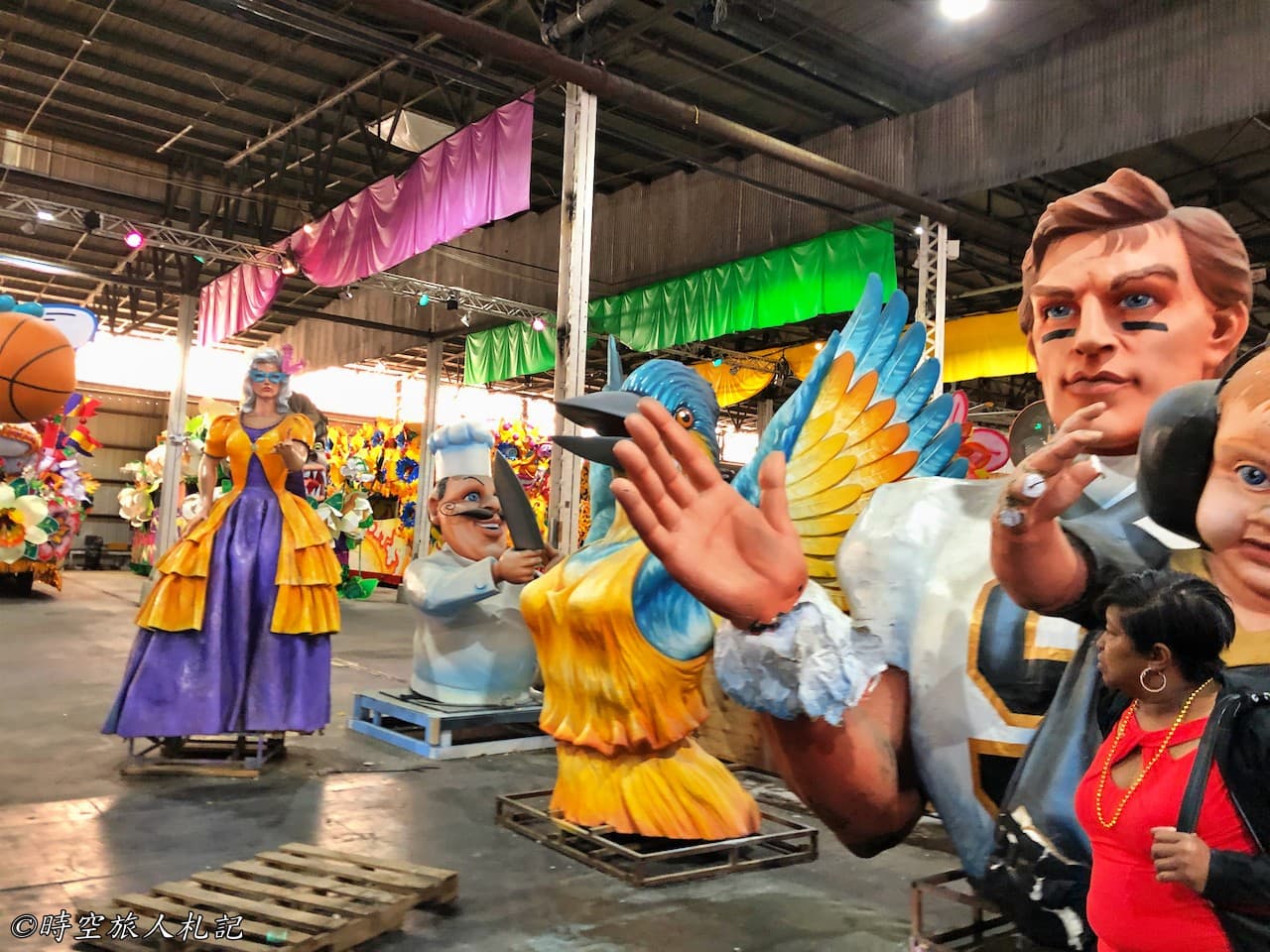
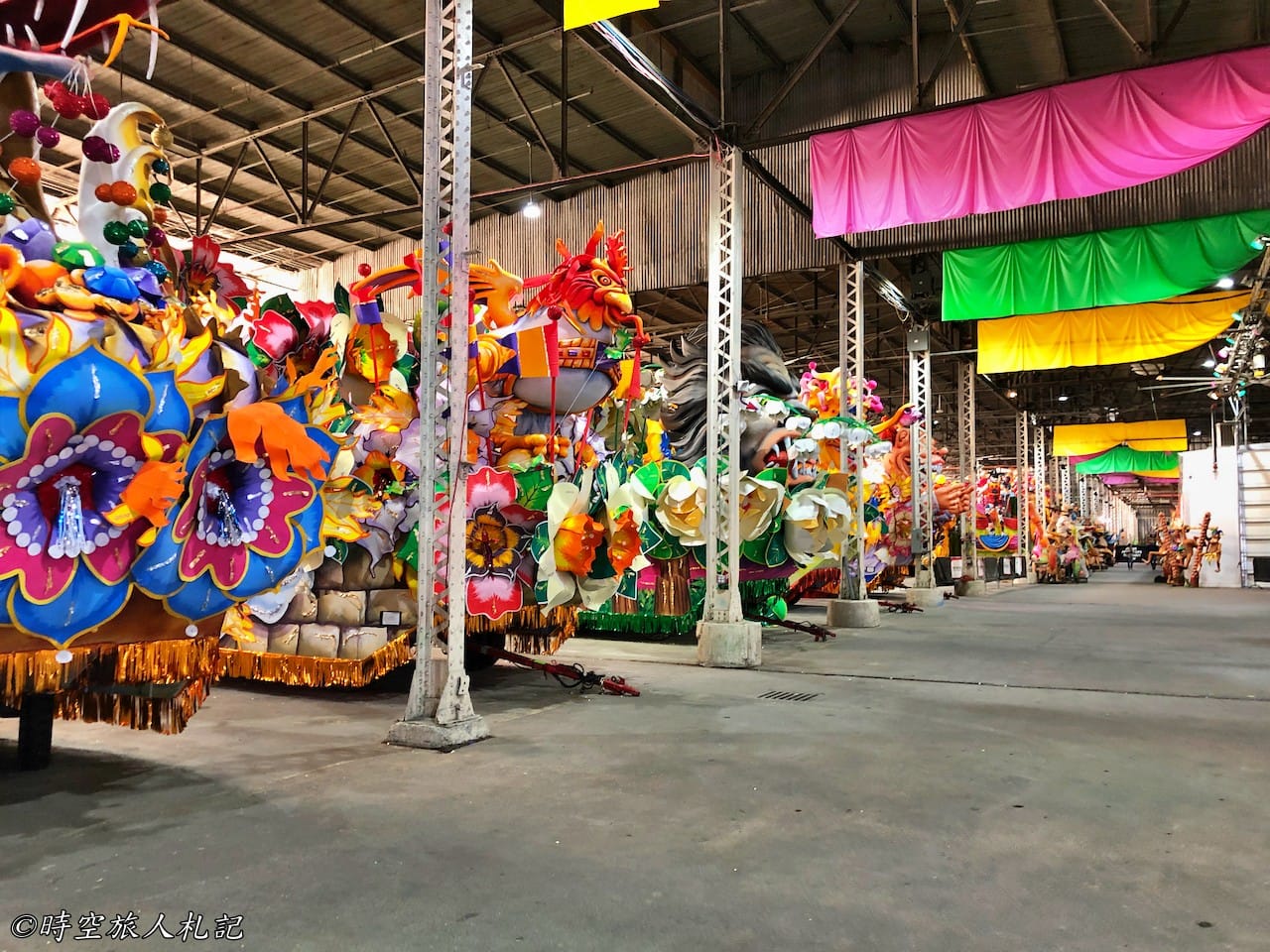

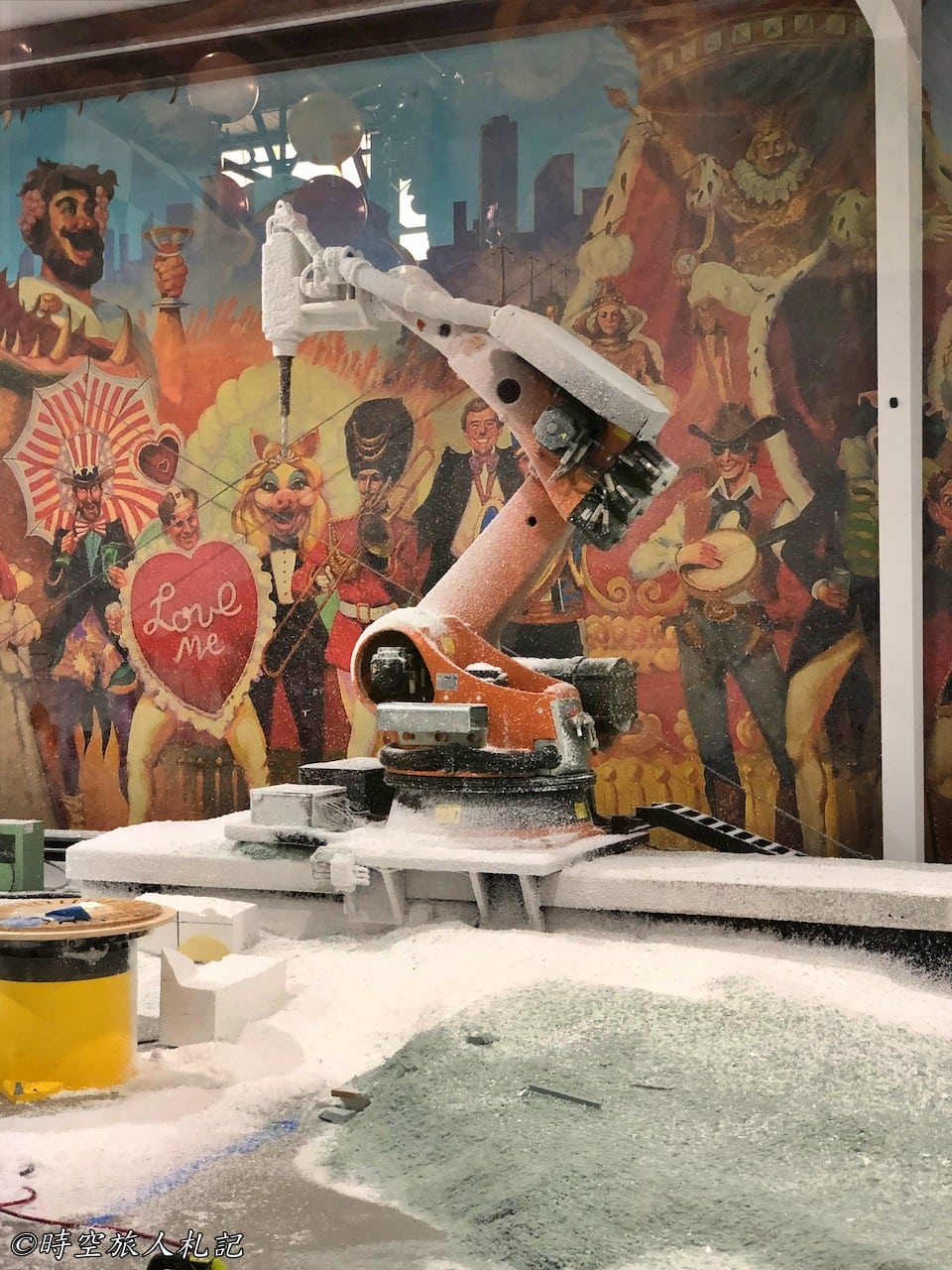


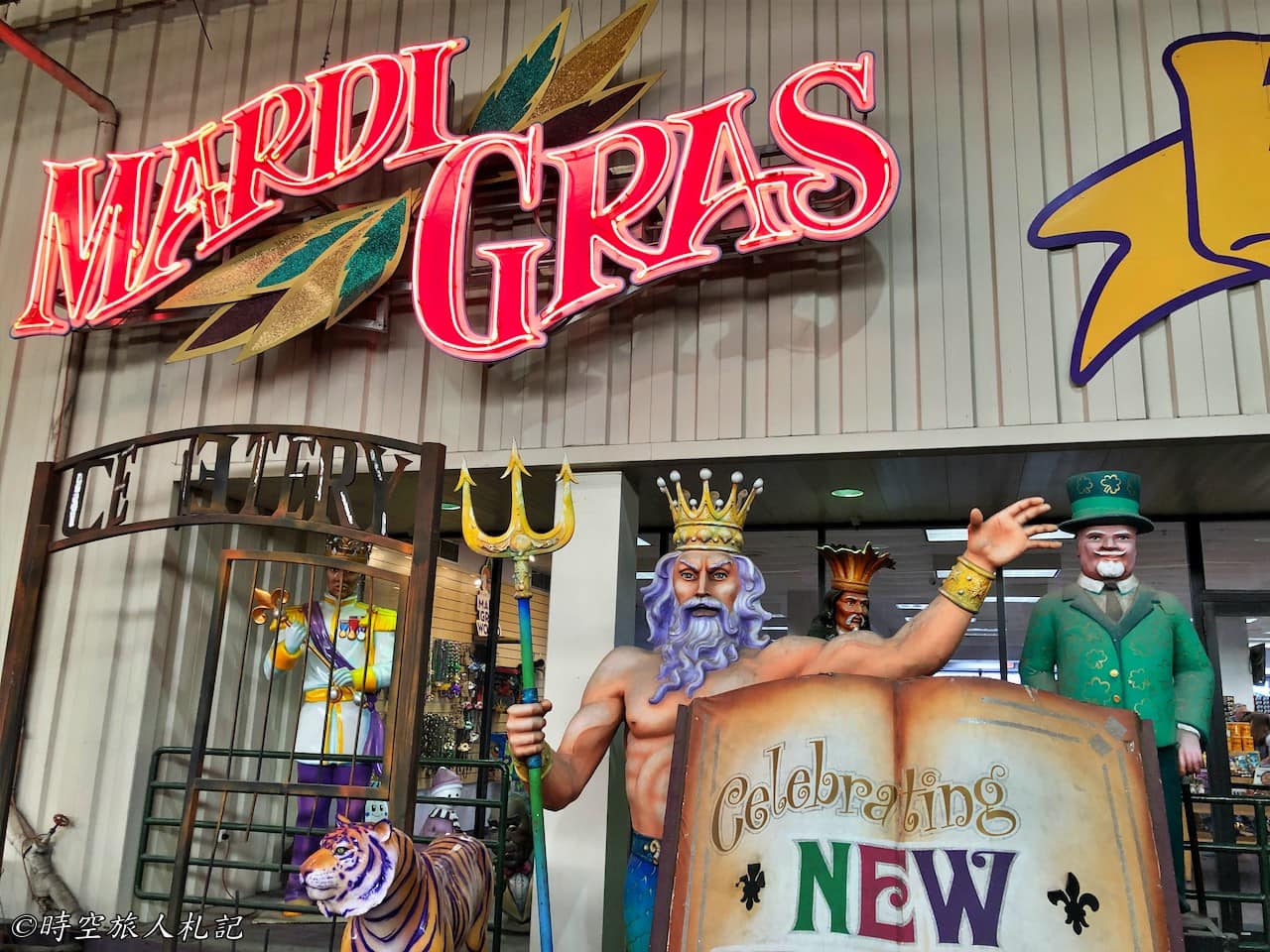
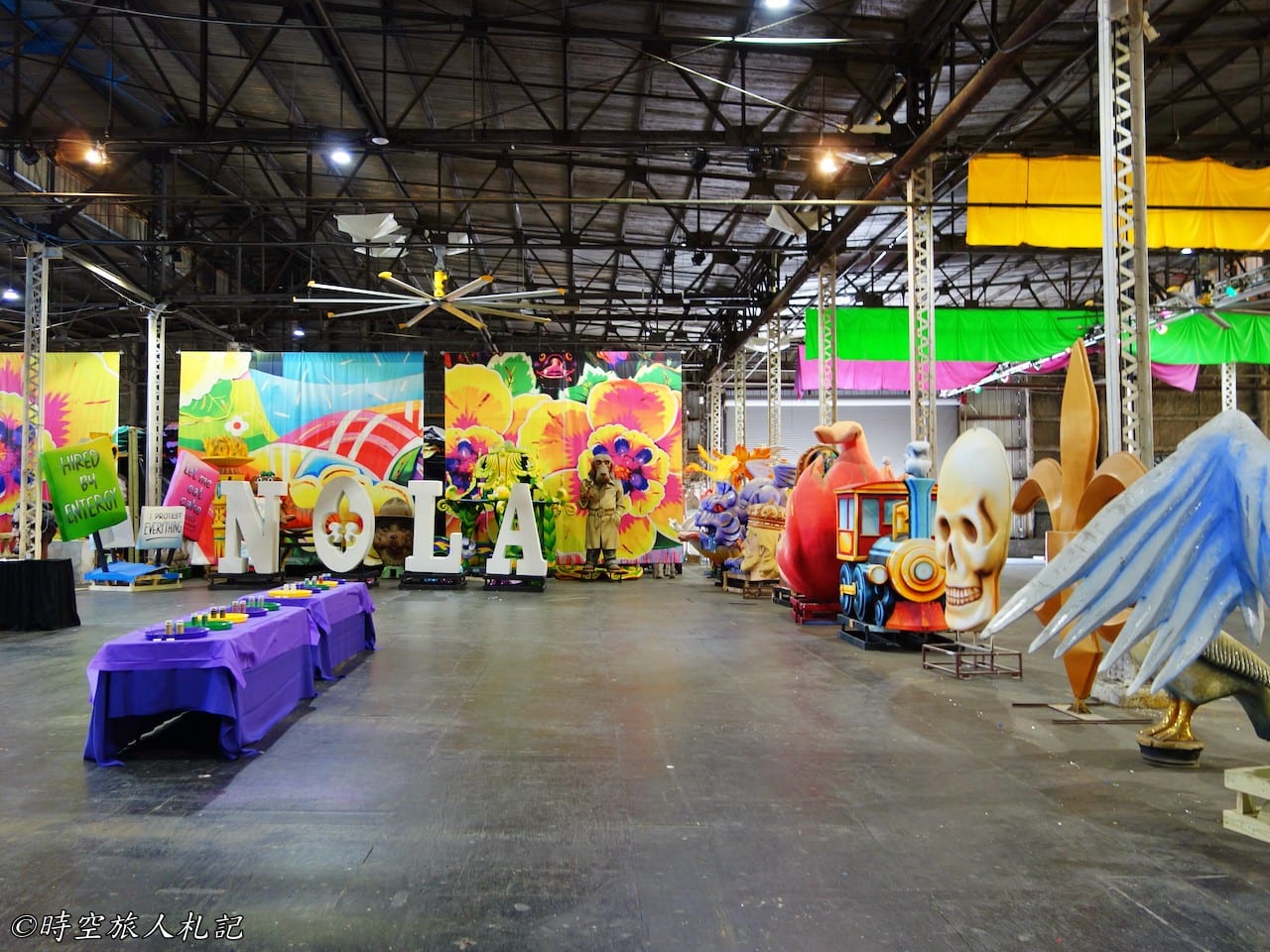
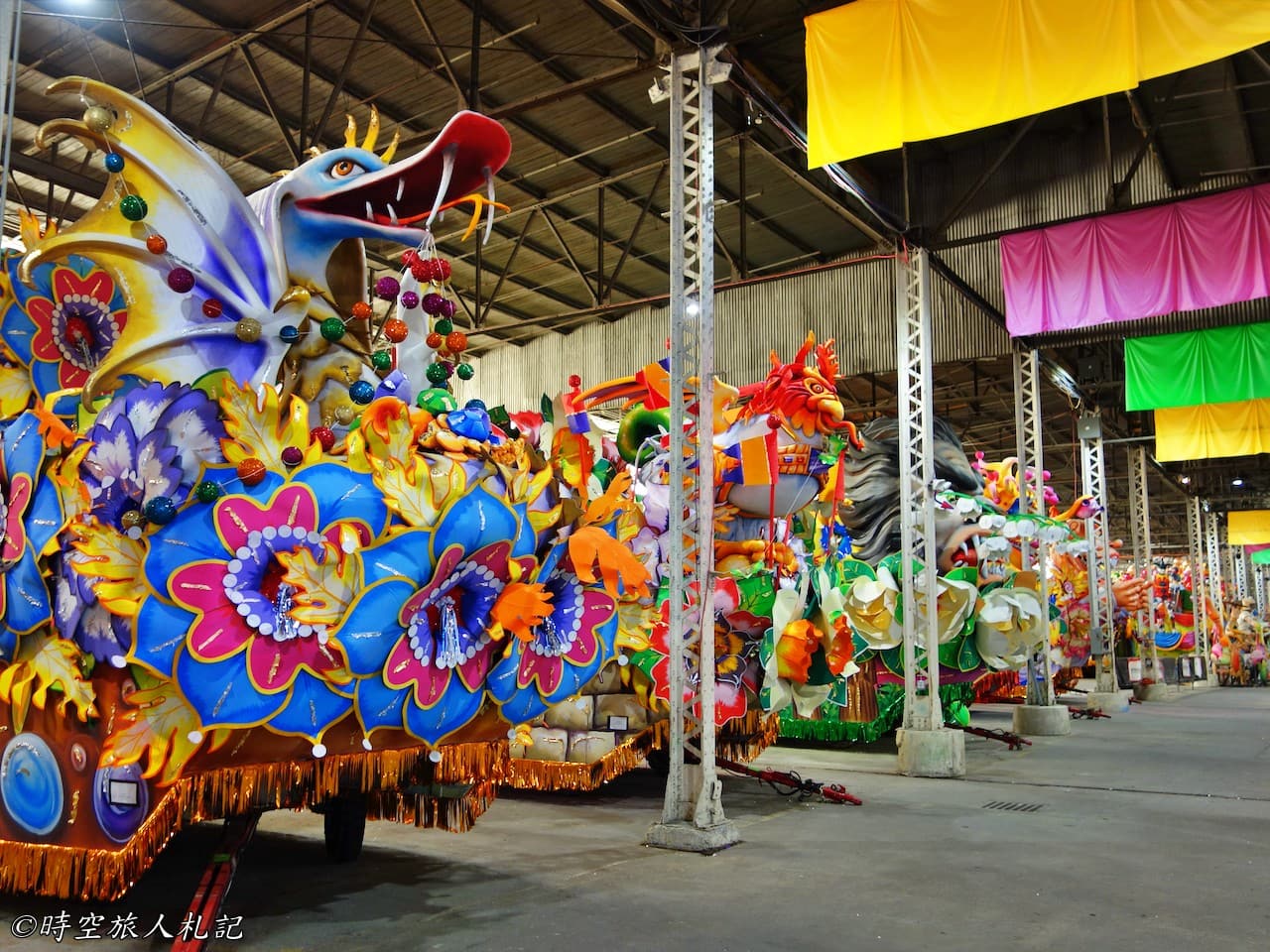

Mardi Gras World offers a free shuttle service that can be boarded at designated locations in the French Quarter and the Central Business District, among others. You can find the routes on their official website. Since the shuttle operates based on demand, you need to call in advance to inform them of your pickup location and the number of people. Mardi Gras World is conveniently located along the Mississippi River, so if you have time while waiting for the shuttle, you can check out the riverside scenery at the back.
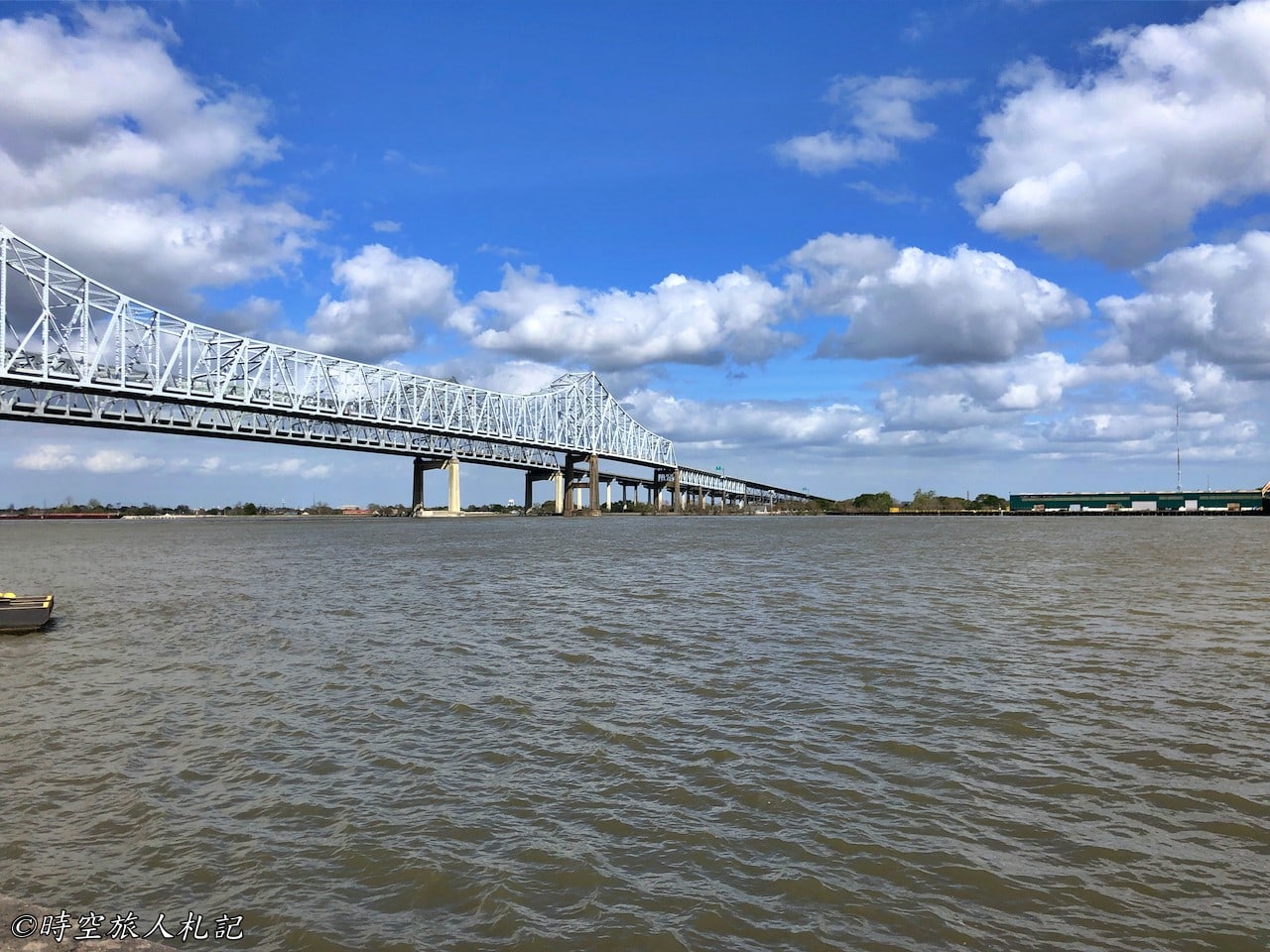
Nearby Attractions | Plantation Itinerary
The suburbs of New Orleans are home to many plantations from the 19th century, making them some of the best destinations for exploring the history of New Orleans and the American South. In the past, the Southern United States had many such plantations, extensively cultivating crops like sugarcane and cotton. Before the Civil War, the South had a large slave population, much of which was to meet the labor demands of these plantations. Visiting these plantations is not only about admiring the beautiful estates but also about understanding the history of that era and the way people lived. There are many plantations near New Orleans, and if you truly have the time, spending a couple of days to visit each one is also feasible. In the end, we chose to visit the most famous Oak Alley Plantation and Laura Plantation, which is said to have retained a large record of the lives of slaves, with very detailed tours. Detailed travel notes are recorded in the following article: this article.
Plantation Day Trip
New Orleans | Cuisine
New Orleans represents the pinnacle of Southern American cuisine. Due to its rich colonial history, New Orleans cuisine is influenced by French, Spanish, and African culinary traditions. Cajun and Creole are two distinct cuisines characteristic of New Orleans. Cajun refers to the French-speaking immigrants from Canada to the Southern United States, with a more rustic culinary culture. This cuisine makes extensive use of southern spices and seafood, and is known for its spiciness. Creole refers to the descendants of French, Spanish, and African immigrants, with their eating habits deeply influenced by French cuisine, but also by Caribbean and African cuisines. Although it appears similar to Cajun cuisine, Creole seasoning is usually richer and not typically spicy. The restaurants we recommend after our experiences are all shared in this article.
Further reading
- More Louisiana posts
Thank you for visiting our website.
All the content on this site is original and shared with the purpose of providing valuable information. We sustain the operation of this site through a small amount of advertising and sponsored links. If you click on links to third-party merchants on our site and make purchases, we may receive a portion of the sales as a commission. If you click on links to third-party merchants on our site and make purchases, we may receive a portion of the sales as a commission.
Find more posts on a map Here.
My recommended resources for hotel bookings.
Recommended travel credit card for US-based travelers
Travel with just a backpack!
Buy me a coffee and support my contents!
If you are interested in quoting this article or using any part of its content and images on your website or publication, please contact us via email to request permission.

